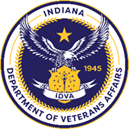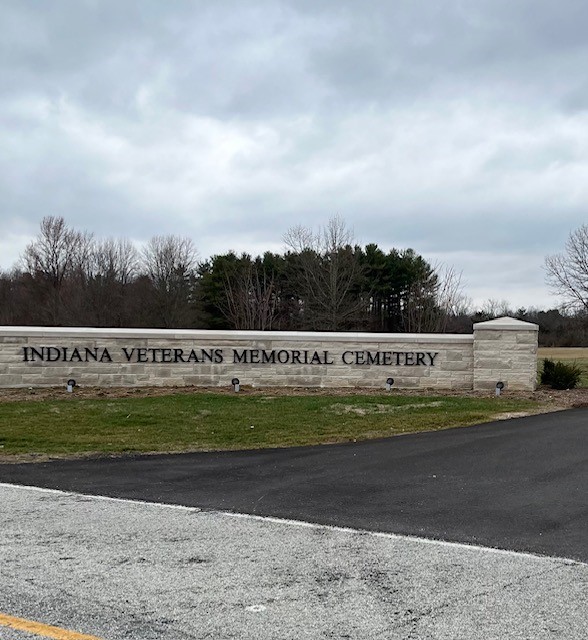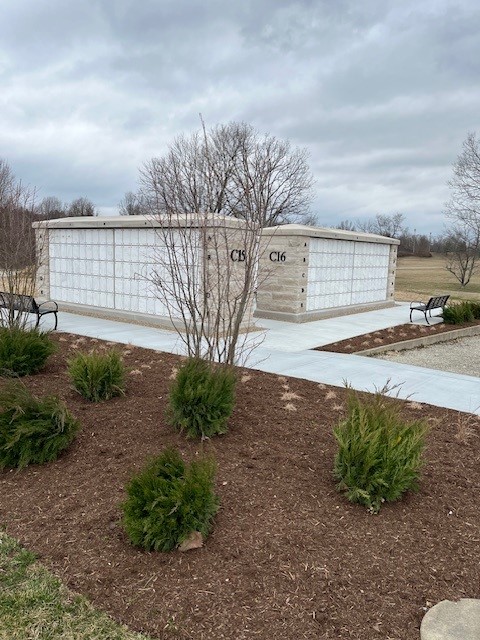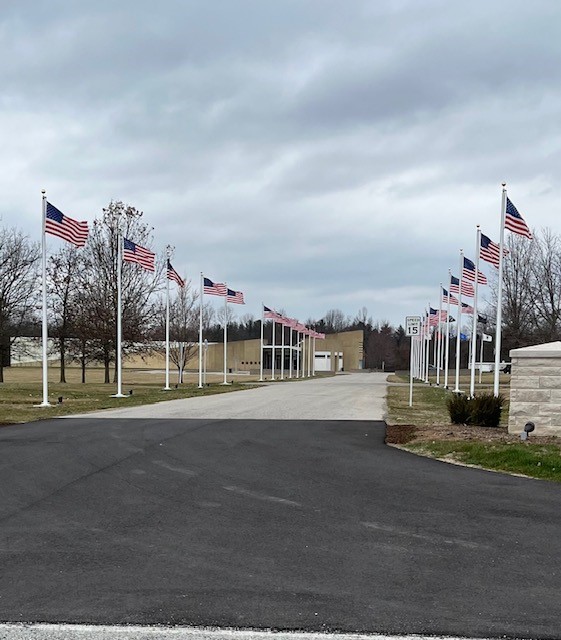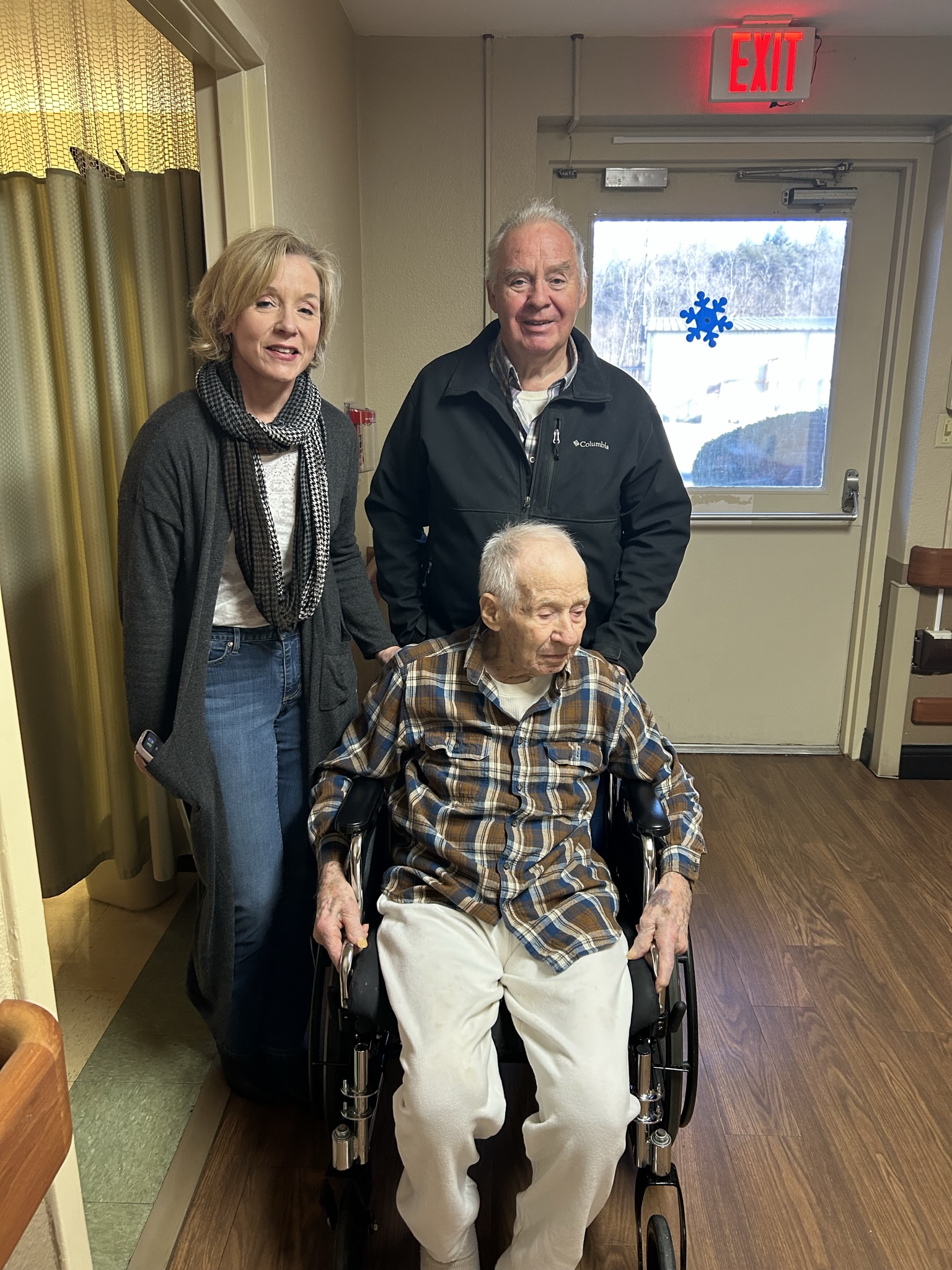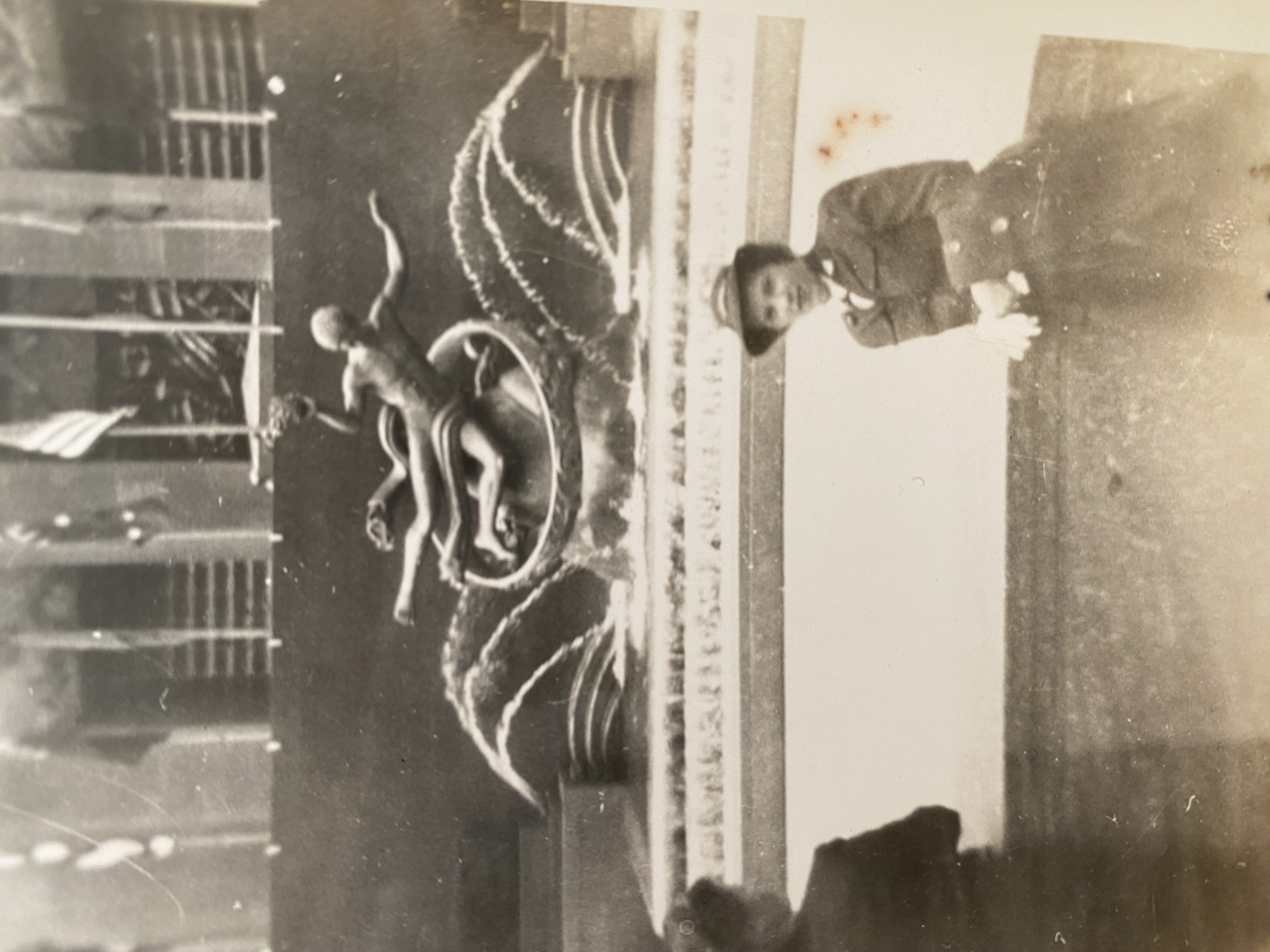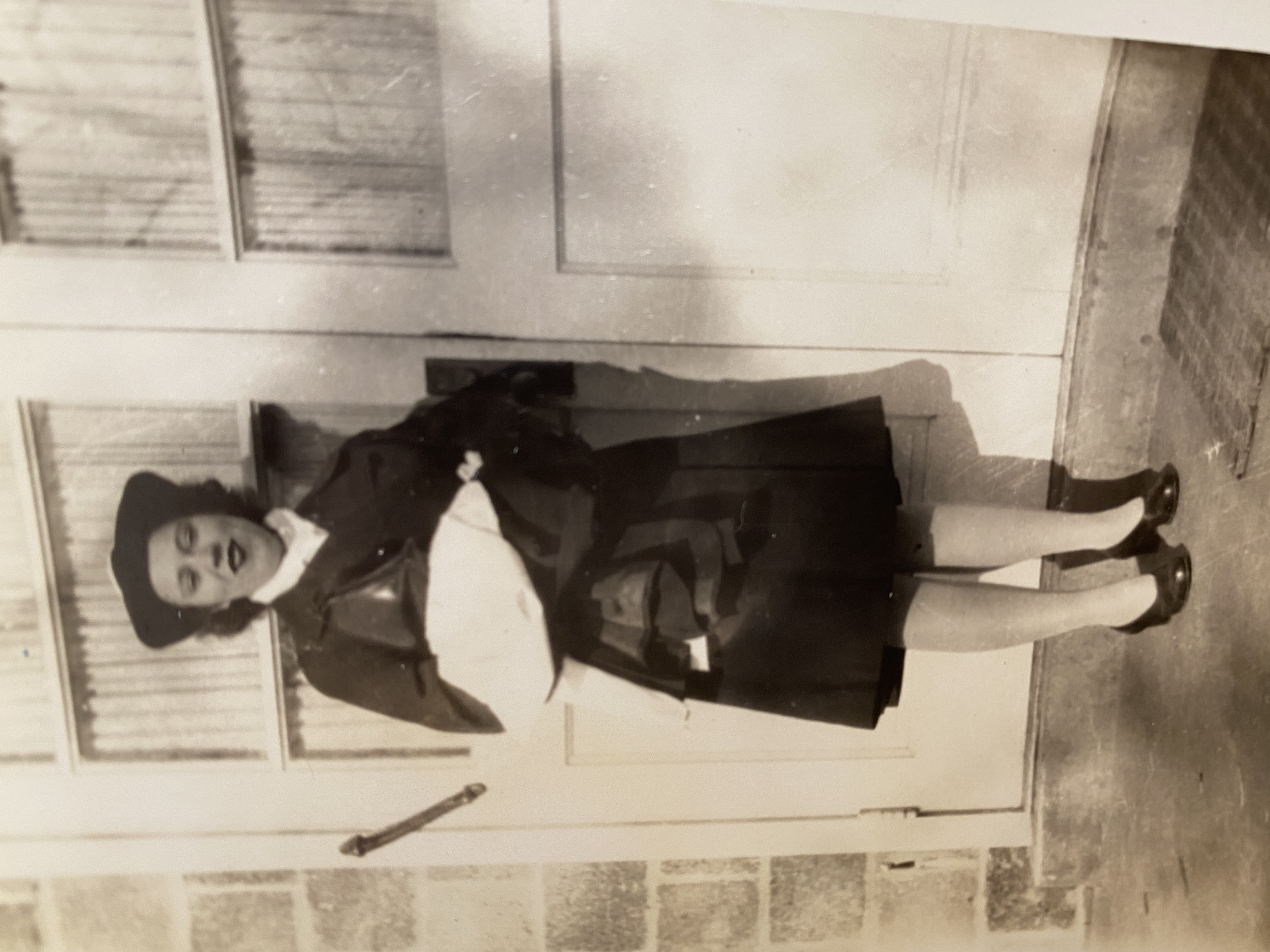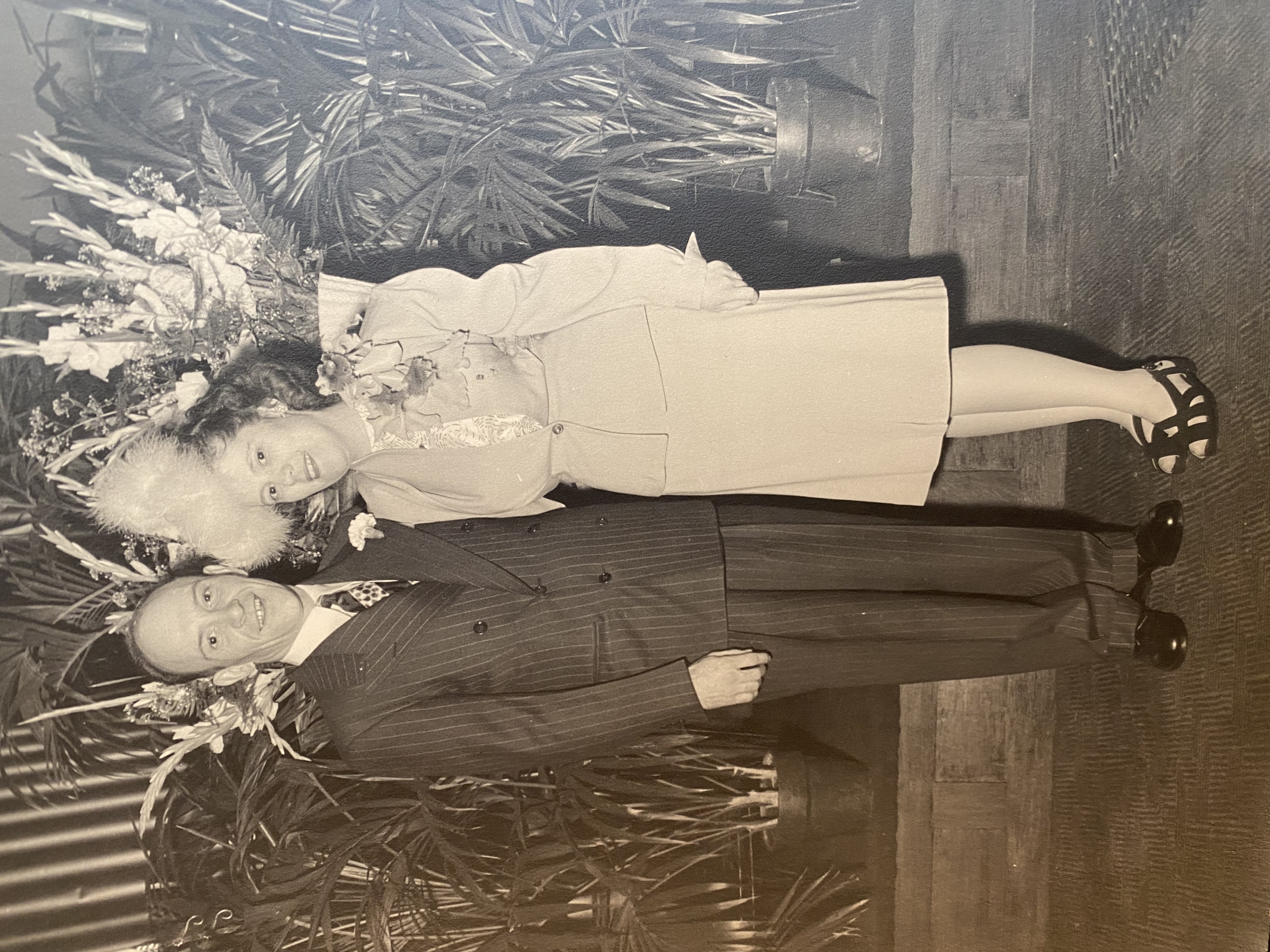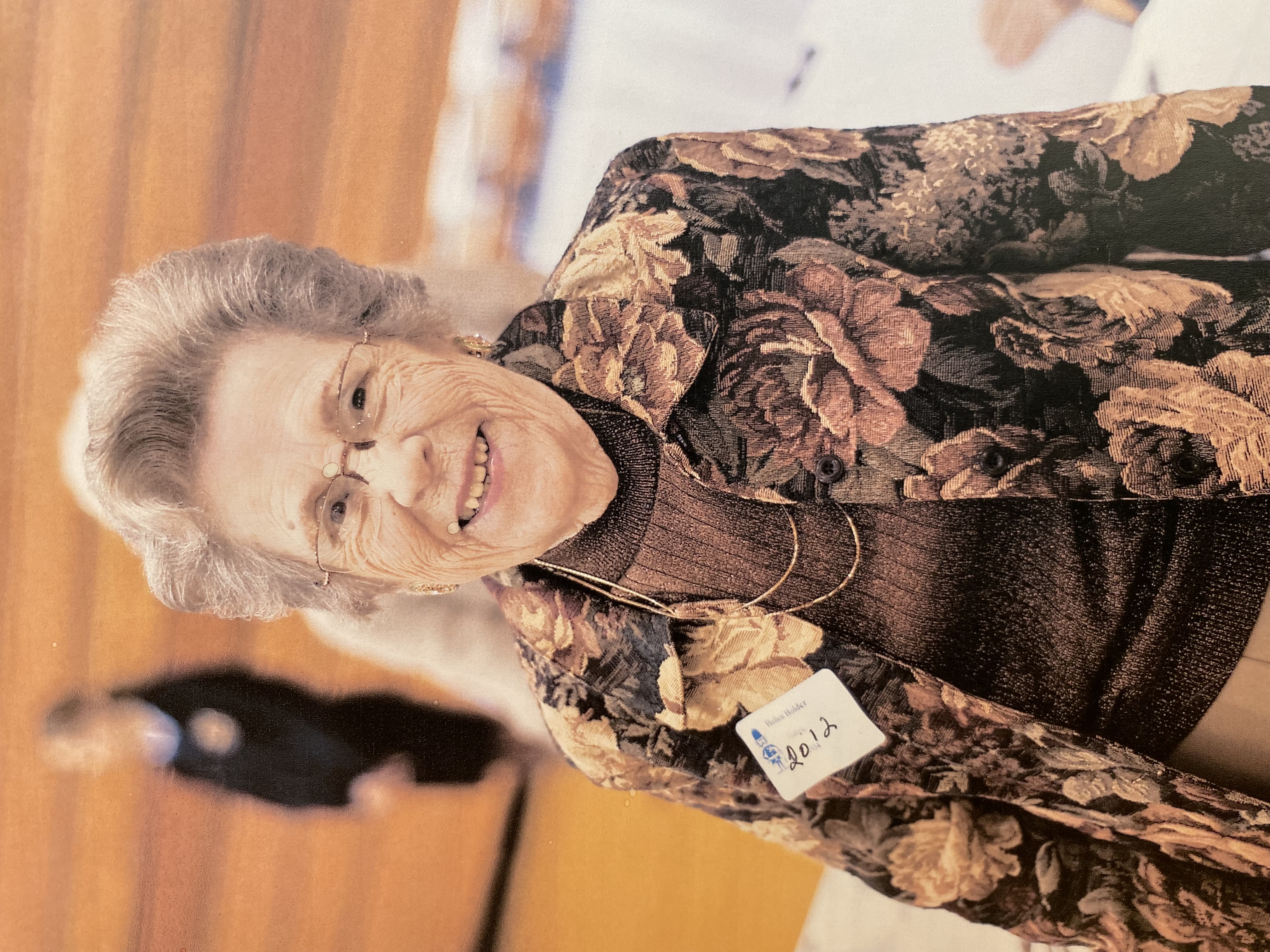Welcome to our blog! Get the latest Veteran stories from around the state of Indiana right here. Have a story suggestion? E-mail us at outreach@dva.in.gov.
Women Veterans are not Invisible
Thursday, May 23, 2024
Women Veterans are not Invisible
by Laura McKee
Have you ever parked in a spot designated for veterans and been told your husband had to be with you to legally park there? Have you ever visited a Veterans Affairs hospital or clinic with your spouse and been told your appointment couldn't be verified because the front desk staff were looking for your spouse’s name? Have you ever attended a conference for the American Legion, Veterans of Foreign Wars, Disabled American Veterans, or American Veterans and been told you weren't registered because they were looking for your name under the Women’s Auxiliary? Many women veterans, including myself, have faced these situations and more.
There was a time when women were forbidden to serve in the military. Prior to 1917, if a woman wanted to serve, she had to disguise herself as a man, change her name, and risk being thrown in jail. During World War I, women were finally granted legal permission to enlist in the armed forces reserve, replacing men who were trained in office, managerial, and clerical work. During World War II, women could enlist in the military in emergency capacities and fill non-combat positions. Once the war ended, they were released from their military duties. Despite their brave service, they found themselves jobless and unrecognized, expected to walk away as if they had never worn the uniform and rejoin civilian life.
It wasn’t until June 12, 1948, that President Harry Truman signed the Women’s Armed Services Integration Act, allowing women to serve as full, permanent members of all branches of the military. Women fought for the right to serve, but as veterans, they discovered a new struggle. The Veterans Administration (VA) health care and benefits system, traditionally designed for male veterans, did not consider the unique needs of women veterans. Additionally, women often felt isolated, unacknowledged, and invisible after returning to civilian life.
The number of women veterans continues to grow, and efforts are being made to ensure we have equal access to resources, benefits, and health care. The Indiana Department of Veterans Affairs (IDVA) is addressing the needs of women veterans. In 2015, IDVA hired me as the first full-time women veteran coordinator. In fall 2019, IDVA partnered with the U.S. Department of Veterans Affairs to host a photoshoot for female veterans. The “I Am Not Invisible” photoshoot was a national campaign and photo exhibit aimed at highlighting the impact of women veterans and their service.
This year, Indiana joins many other states in acknowledging women veterans on June 12. This opportunity is a way to recognize the contributions and sacrifices of women who are currently serving and have served in all branches of the military. We are mothers, grandmothers, wives, aunts, sisters, daughters, and friends. We are more than 33,000 strong in Indiana, but without a uniform, there is no outward indication that we are veterans. If you aren’t sure if a woman has served, ask her. If she says yes, thank her for her service. Women veterans must continue to be accepted and supported by their communities so that more of us are inspired to serve.
Women Veterans Spring Retreat 2024
Tuesday, May 21, 2024
A Weekend of Wellness: Women Veterans Find Solace and Support at Spring Retreat
By Kirsten Clark
Spencer - More than 40 Indiana women veterans gathered at McCormick's Creek State Park's Canyon Inn for a weekend of wellness, connection, and relaxation. The Spring Women Veterans Wellness Retreat, hosted by the Indiana Department of Veterans Affairs, was a chance for women to come together, share their stories, and find support.
From yoga and art therapy to hiking and drum circles, the retreat offered something for everyone. Women veterans had the opportunity to learn about military war dogs, explore their identity, and connect with others who understand their experiences.
For many, the retreat was a chance to finally feel seen and recognized. "It's frustrating when I get mail addressing my husband as the veteran, assuming he's the one who served," said Patricia Hawks, a U.S. Army veteran. "But here, I'm among women who understand me."
“What I found most beneficial for me was being able to be around other women veterans and seeing a reflection of myself in others,” Miranda Durham, a U.S. Army veteran said. “Being able to share experiences in a supportive environment helps me deal with my traumas. It was great to be able to create new memories with other women warriors in the state of Indiana.”
The retreat also provided access to federal and state resources tailored to women veterans' unique needs. "It's special to be able to connect someone with the resources they need right away," said Laura McKee, IDVA Women Veterans Coordinator.
The wellness retreat was created from a vision to connect women veterans with each other and with the benefits they've earned. And it's growing! The partnership with the Indiana Department of Natural Resources has created the perfect setting for women veterans to enjoy a weekend of camaraderie and relaxation.
As Lisa Wilken, a U.S. Air Force veteran, put it, "This retreat had something for everyone - stress relief, learning, and connection. It was a chance to rejuvenate and connect with others."
The IDVA Outreach Team hopes to hold more Nationally-recognized wellness retreats and make them accessible to every woman veteran in the state.
"Thank you to each woman who made it a priority to come out," said McKee. "You made the weekend amazing!"
If you're a woman veteran looking for support and connection, keep an eye out for future retreats and events.
View images from the Retreat here.
Hero of War, Hero of Life
Wednesday, May 1, 2024
Hero of War, Hero of Life: Remembering Norris Dendy
By Kirsten Clark
Indianapolis, IN — Norris Furman Dendy, a man of quiet strength and indomitable spirit, passed away on March 11, 2024, at the age of 92. His life, marked by resilience, service, and love, left an indelible mark on those who knew him.
Born on May 31, 1931, in Clinton, South Carolina, Norris faced early adversity when his father was tragically murdered, leaving him and his brother, Young, under the guardianship of their older relatives.
“Granddaddy’s brother was really the one who pursued legal action against our granddad’s killers,” recalled Kimberly Dendy, one of Norris's daughters. “They won the civil suit but lost the criminal case unfortunately."
Despite this loss, Norris persevered. His early life was marked by resilience and talent. While being raised by their strict aunt, he and his brother learned piano, a skill that would stay with him throughout his life. At just three years old, Norris showcased his musical aptitude by playing the piano at the World’s Fair in Chicago, while his two-year-old brother, Young, sang. Eventually, they returned to South Carolina under the watchful eye of their older sisters.
In 1957, Norris married Nelcie Jane Oliver, affectionately known as Jane, and the two embarked on a life of adventure and service together. They traveled the world, living in various countries due to Dendy’s military career. Jane was the outgoing counterpart to his quiet demeanor, and together they formed a formidable team.
“Dad was a very quiet type, and my mom was the outgoing one,” said Deidra Davis, another Norris daughter. “He was even more reserved after his second tour in Vietnam, maybe even had PTSD but he was never officially diagnosed.”
Dendy's military career was marked by dedication and bravery. Despite initial doubts about his physical capabilities, he joined the Army Infantry division after college as a 1st Lieutenant. Dendy served at many locations overseas and at the Pentagon. He most notably served two tours in Vietnam, displaying exceptional leadership and courage. His family vividly recalls the anxiety and sacrifices they endured during his deployments.
“I remember after the second tour, the Army gave him R&R and he wanted my mom to meet him somewhere, but she wanted him to come home, so he could see us kids,” said Deidra. “My mom kept us out of school for one day, I think it was a Friday, to visit with our dad, and the school was furious. They marked us as unexcused absences and sent us letters of reprimand. But my mom insisted."
Dendy's military accolades include multiple awards such as the Legion of Merit, Bronze Star, Meritorious Service Medal, Air Medal, and two Purple Hearts. He was an exceptional leader who cared deeply for his soldiers. During his second tour in Vietnam, he was injured in a blast while traveling in a vehicle and was also exposed to Agent Orange, from which he suffered health issues related to the pancreas for the rest of his life.
“Dad had a quiet strength and was incredibly humble, he described the explosion incident as an ‘injury’ and nothing more,” recalls Deidra.
Norris Dendy was not only a distinguished military officer but also a brilliant intellectual. During his time at the Pentagon, he was highly sought after for his writing skills, crafting speeches and memos for generals and other command staff. His exceptional memory and proficiency in math and science set him apart.
Moreover, his passion for education led him to serve as a Professor of Military Science at Virginia State University. In this role, he not only headed the ROTC department but also served as the Senior Advisor to the College President. Norris was pivotal in initiating women into the ROTC program, marking a significant step forward in the program's history.
“He was instrumental in changing the policy at VSU to allow women to be part of ROTC there,” Deidra said. “This was in 1973 and women just weren’t permitted in those ranks until my dad came along.”
After retiring from the military as a Lieutenant Colonel out of Fort Benjamin Harrison in Indianapolis, Norris continued his commitment to education and service. He worked at Indiana Bell, now AT&T, where he contributed to technological advancements and mentored younger colleagues. His transition from military to civilian life was seamless, though adjusting to being called by his first name took some getting used to.
“A lot of people felt he was intimidating because of his Army experiences, but he had a gentle spirit,” Kim said.
Norris's legacy extends beyond his professional achievements. He was a devoted husband, father, and grandfather who cherished his family above all else. Despite the challenges he faced from time spent at war, he remained active and engaged throughout his life.
“He was very active even in old age, always walked everywhere and would never use a cane,” Megan Jeter, Norris's granddaughter, reminisced. “He also taught all us grandkids military time.”
Norris Dendy's life exemplified the values of resilience, service, and love. His passing leaves a void in the hearts of those who knew him, but his legacy of courage and compassion will continue to inspire generations to come.
“He was an American hero,” said Deidra. And indeed, Norris Dendy's life stands as a testament to the best of what it means to be one.
 |  |  |
Final Flight of an Indiana National Guard Icon
Tuesday, April 2, 2024
Final Flight of an Indiana National Guard Icon
After more than 37 years of dedicated service, Tim Winslow, Operations Director of the Indiana Department of Veterans Affairs (IDVA), is retiring from the Indiana National Guard. To commemorate this milestone, Winslow took to the skies on March 10 for a "fini flight" aboard the familiar Sikorsky UH-60M Blackhawk helicopter.
A decorated military leader with over three decades of service, as the Assistant Adjutant General-Army, Winslow played a critical role in translating guidance into actionable plans, generating readiness and sustaining performance across the organization's 11,000 soldiers and civilians.
Commissioned in 1989 through ROTC, Winslow's distinguished career spanned various leadership and operational roles, including service in Kuwait and numerous stateside assignments. He accumulated over 2,500 flight hours in various aircraft, including the OH-58, UH-1, AH-1, UH-60, and C-12.
Winslow's notable positions include State Army Aviation Officer, Director of Plans, Operations, and Training, and Chief of Staff. He earned degrees from Purdue University, the University of Phoenix, and the United States Army War College.
Throughout his career, Winslow received numerous decorations, including the Meritorious Service Medal and the Army Commendation Medal. His dedication and expertise have left a lasting impact on the Indiana National Guard, and his retirement March 30 at the Indiana War Memorial marks the end of an era.
UH-60M Blackhawk (Courtesy photo) |
Col. Scott Oden pilots the helicopter during Winslow's final flight. (Courtesy photo) |
Maj. Gen. Timothy Winslow, left, and Col. Scott Oden, Indiana State Army Aviation Officer, Indiana National Guard, share a moment in front of the UH-60M Blackhawk that Winslow co-piloted with Oden on his final flight before retiring from the Indiana National Guard. (Courtesy photo) |
Chief Warrant Officer 4 Darrell Jaggers, a Vietnam veteran, poses with his survival knife, which he carried during the war and presented to Winslow in 1994. The photo was recreated after Winslow's last flight to mirror the original taken in 1994, marking a poignant moment in their shared aviation history. (Courtesy photo) |
Maj. Gen. (Ret.) Timothy Winslow and Dennis Wimer, Director of the Indiana Department of Veterans Affairs, at Winslow's retirement ceremony March 30 at the Indiana War Memorial. (Courtesy photo) |
Healthy Heart Fashion Show
Thursday, February 29, 2024
Inaugural Healthy Heart Fashion Show Empowers Women Veterans at Indiana Veterans Center
The Indiana Veterans Center hosted a groundbreaking event Feb. 23, bringing together fashion and wellness in a powerful display of support for women veterans. The first-ever Healthy Heart Fashion Show showcased style and advocacy, highlighting the importance of heart health among our courageous veterans. A night filled with inspiration and elegance, celebrating the strength and resilience of those who have served.
(All photos courtesy of Photography by Sarah Crail, LLC)
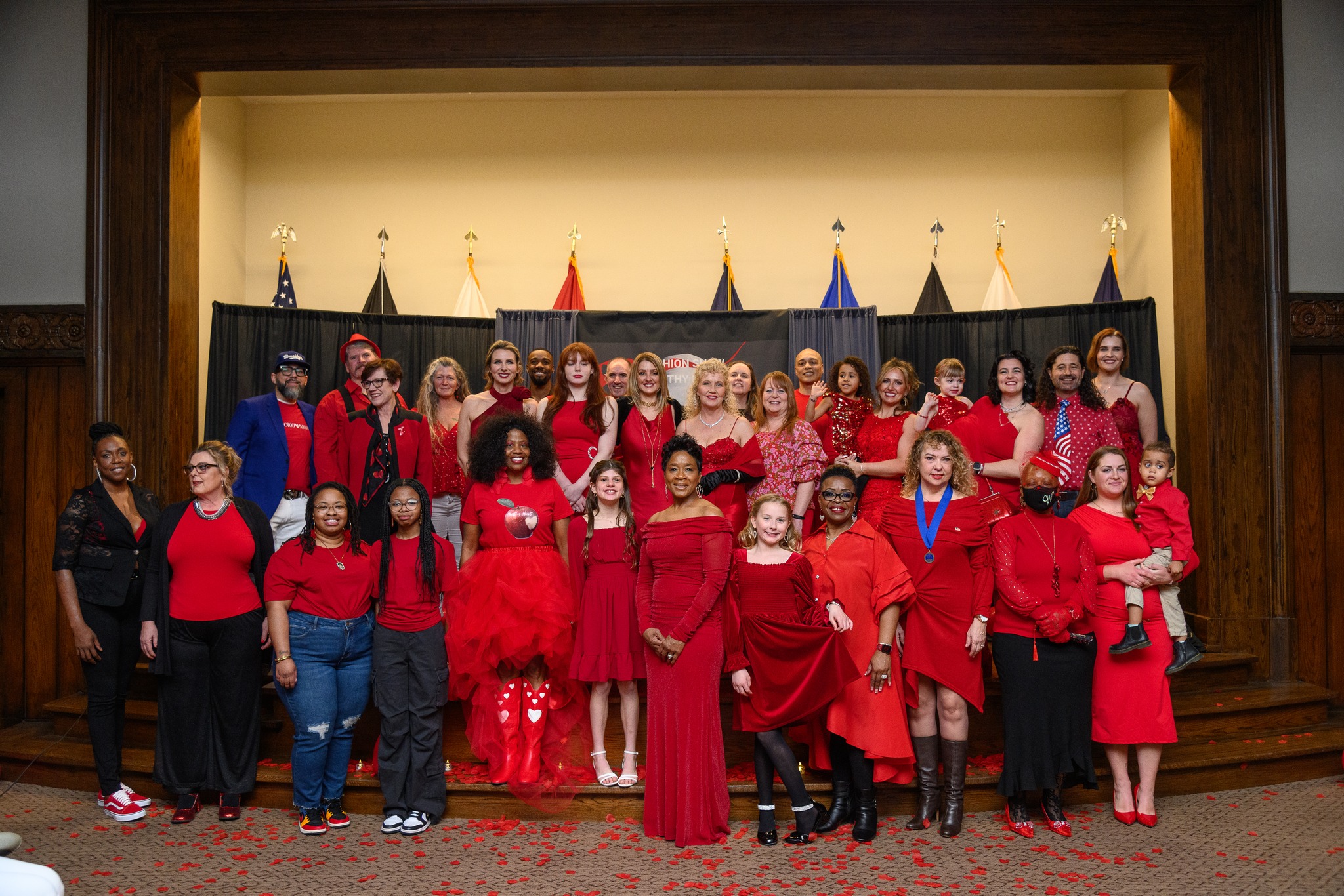 | 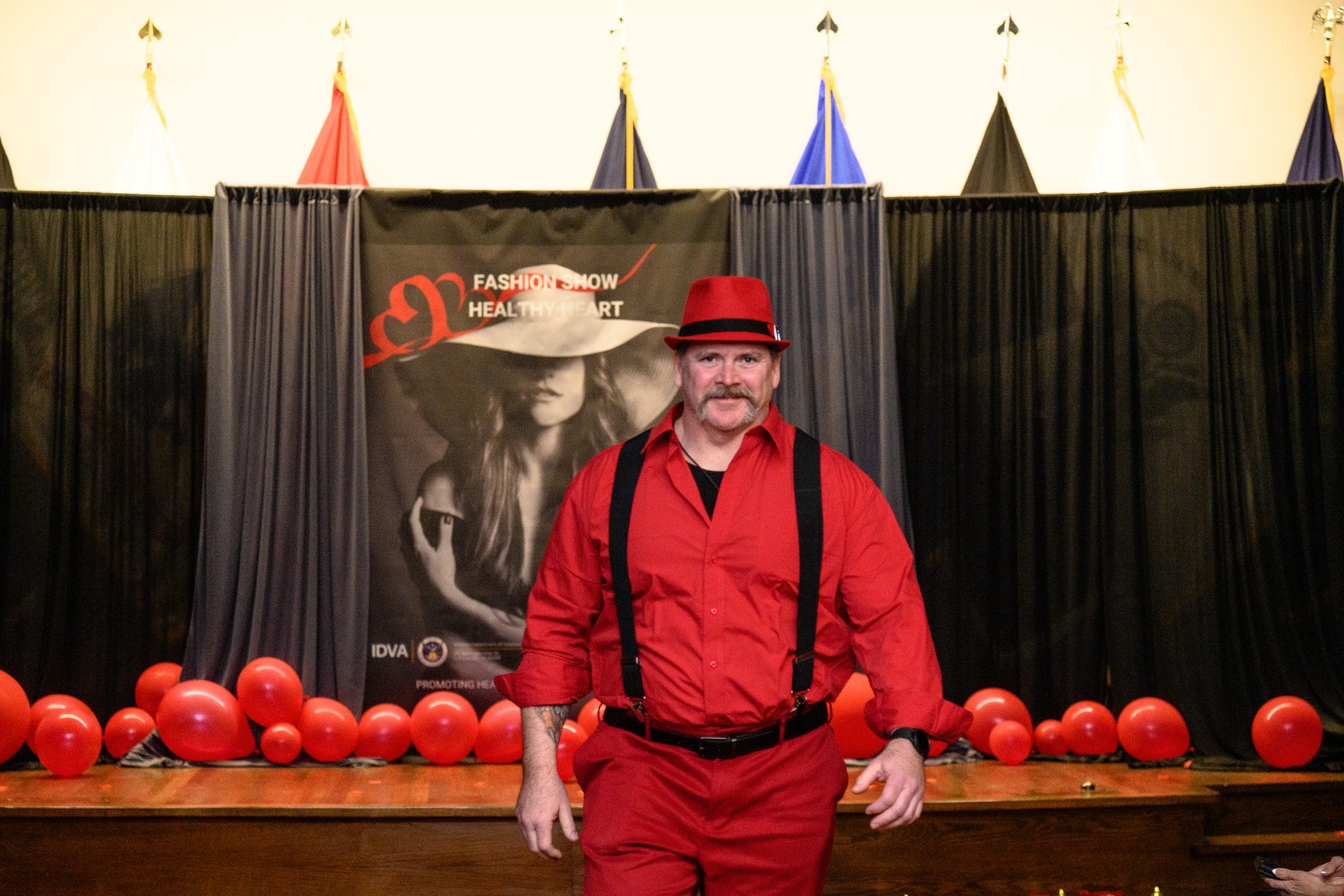 | 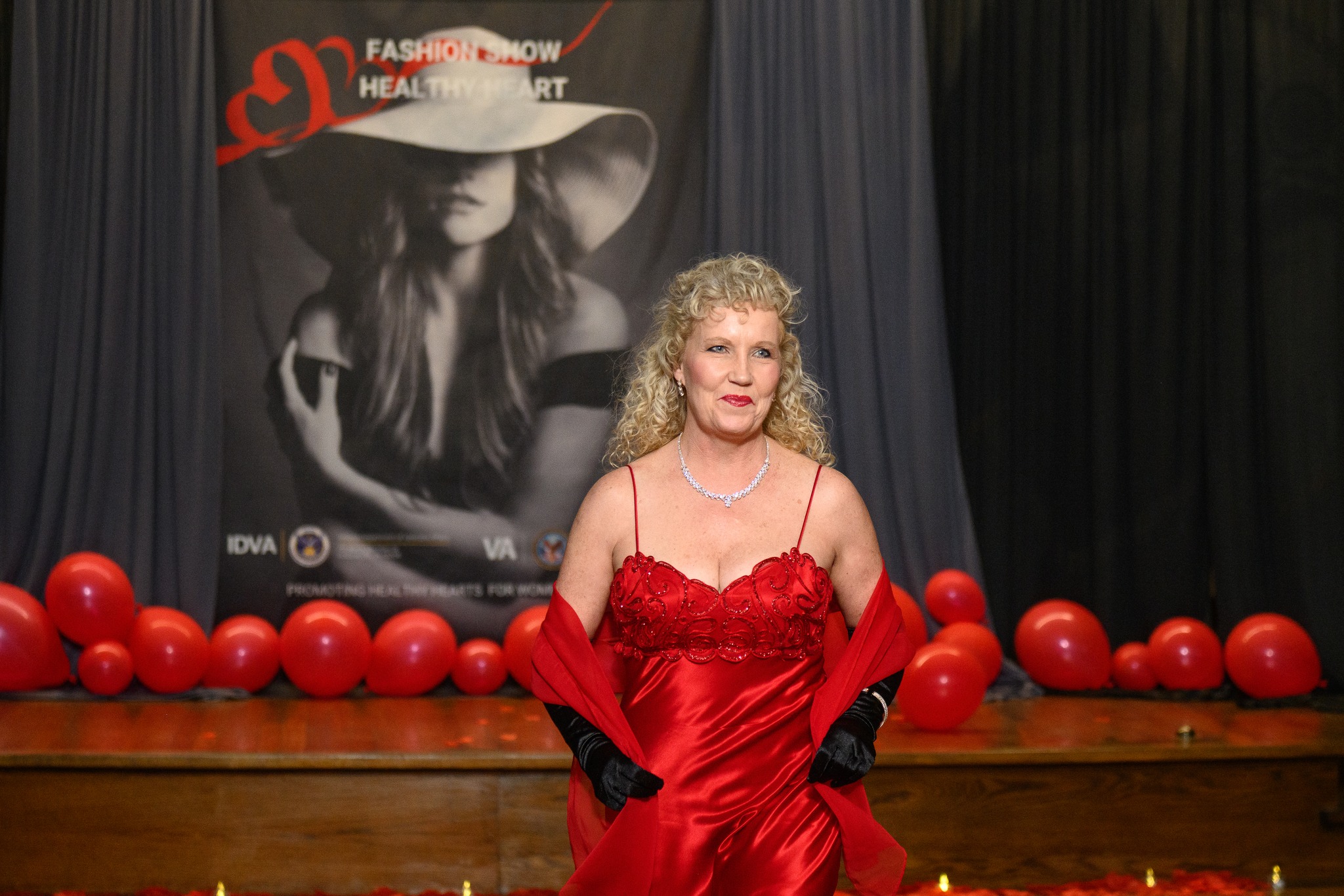 |
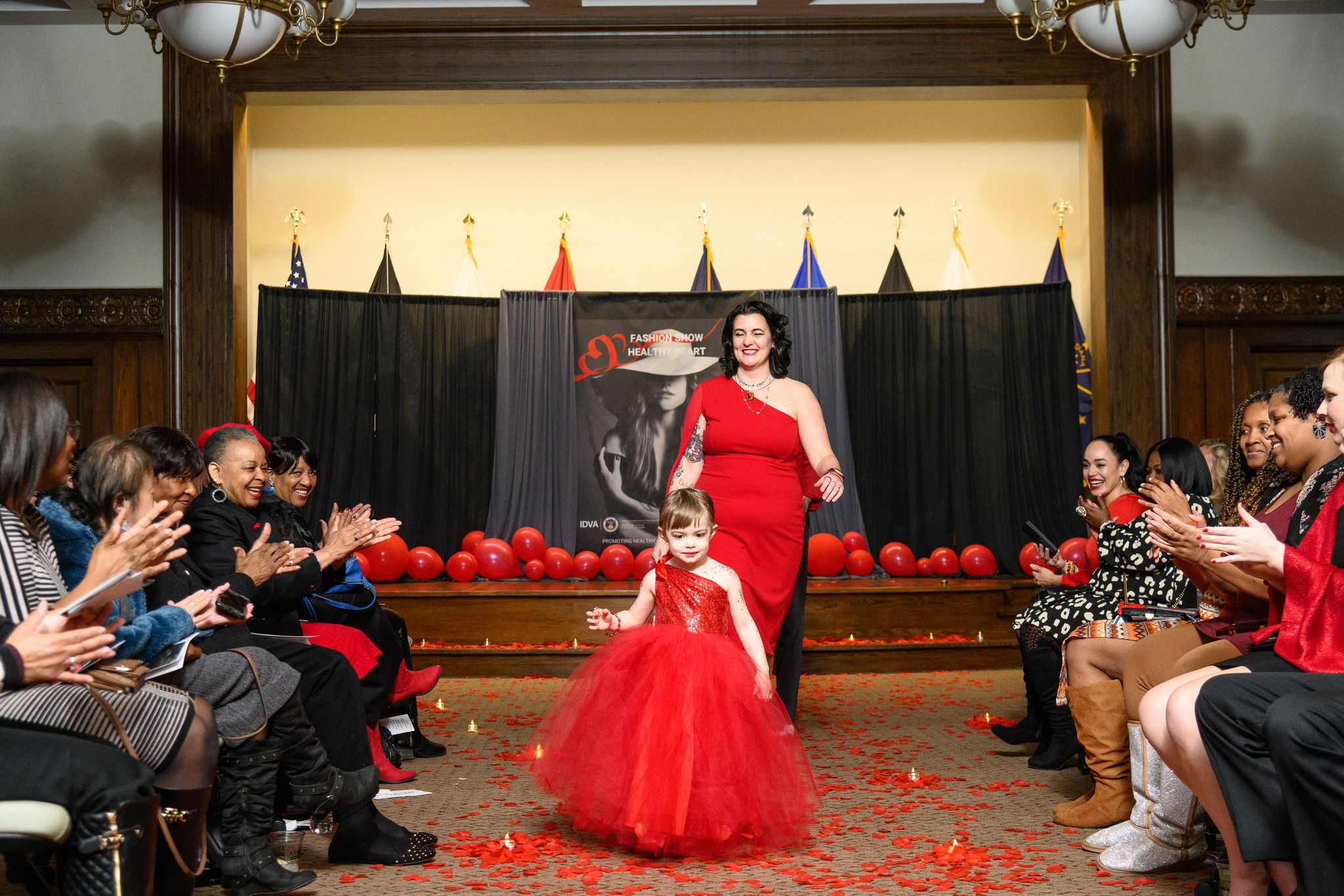 | 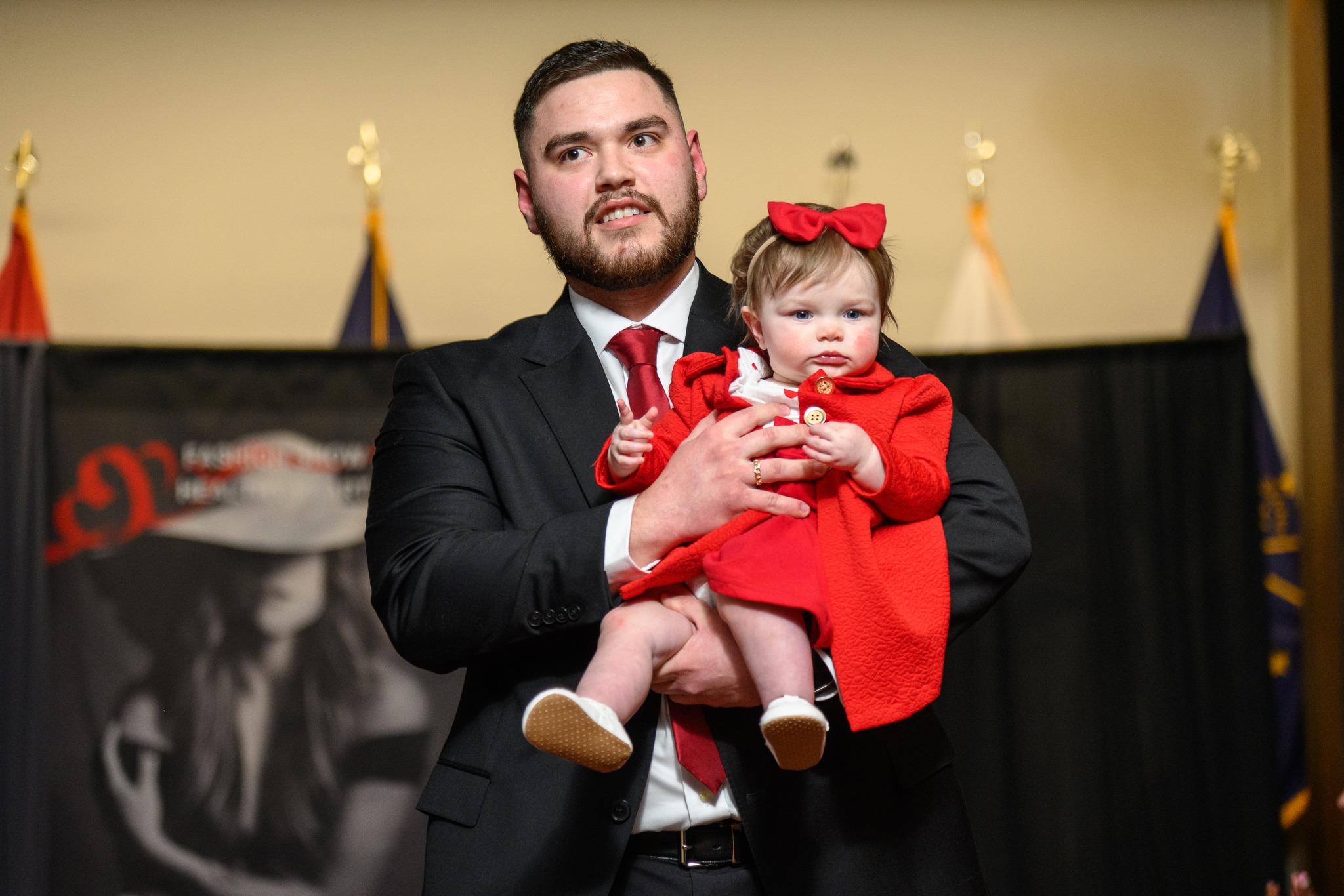 | 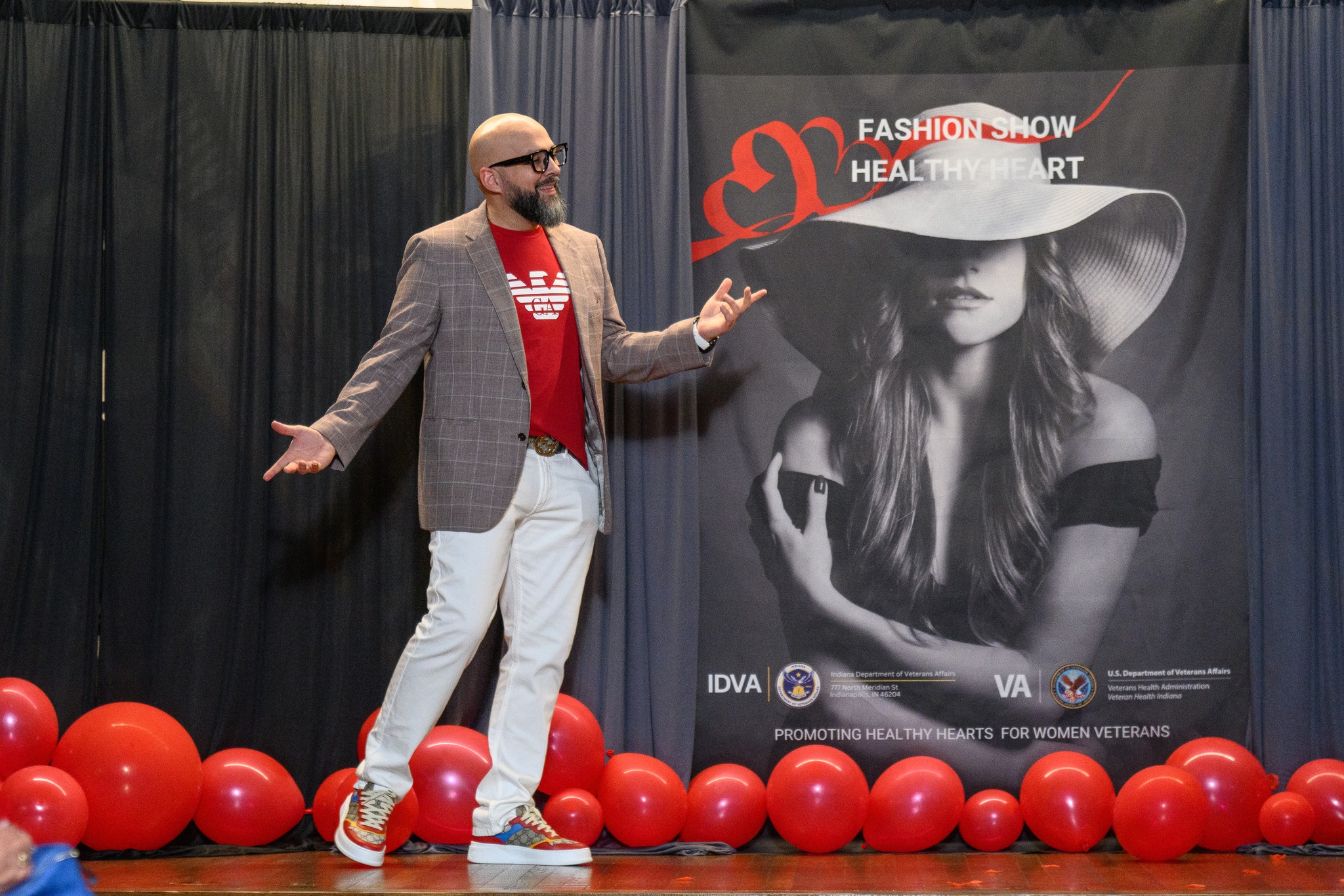 |
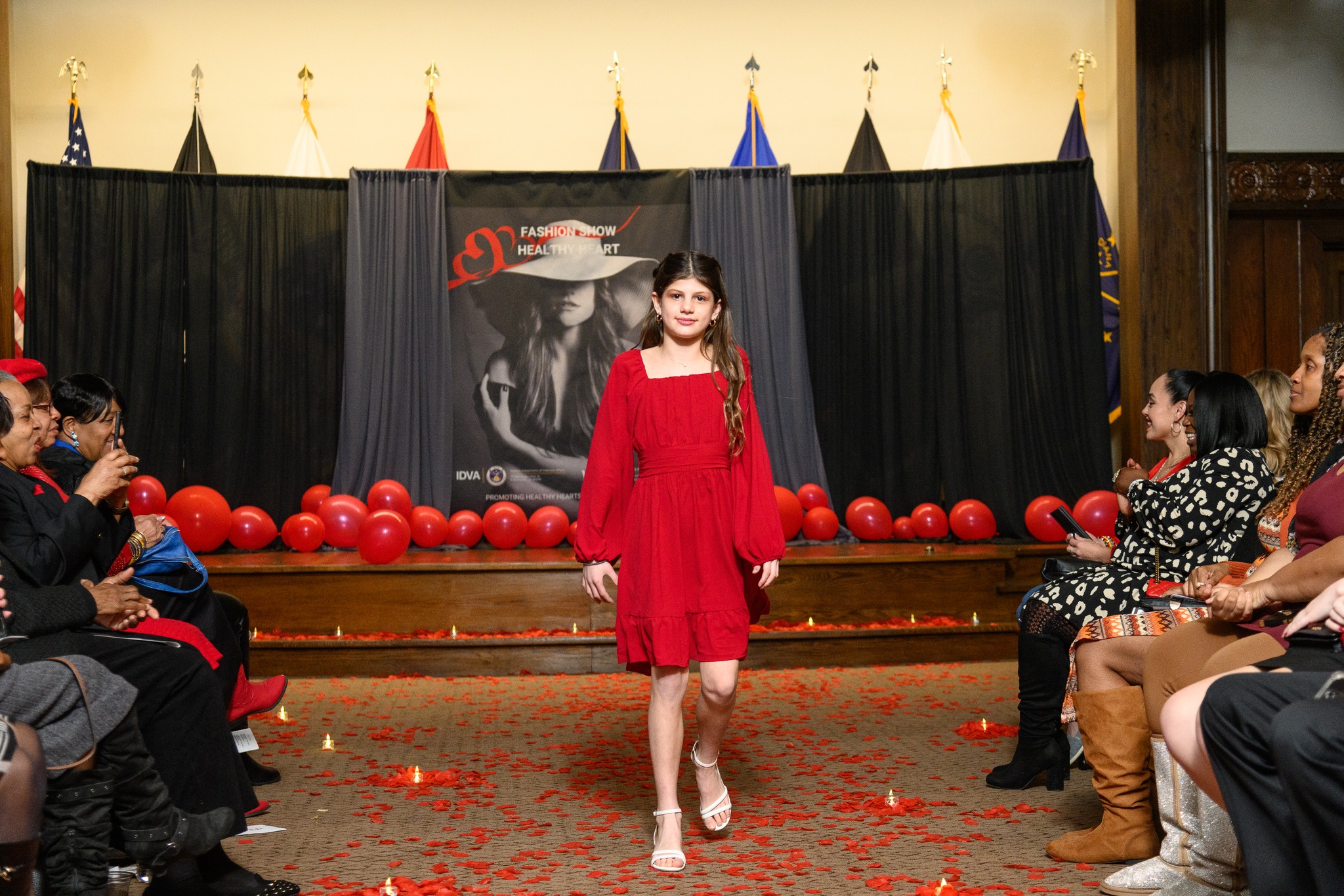 | 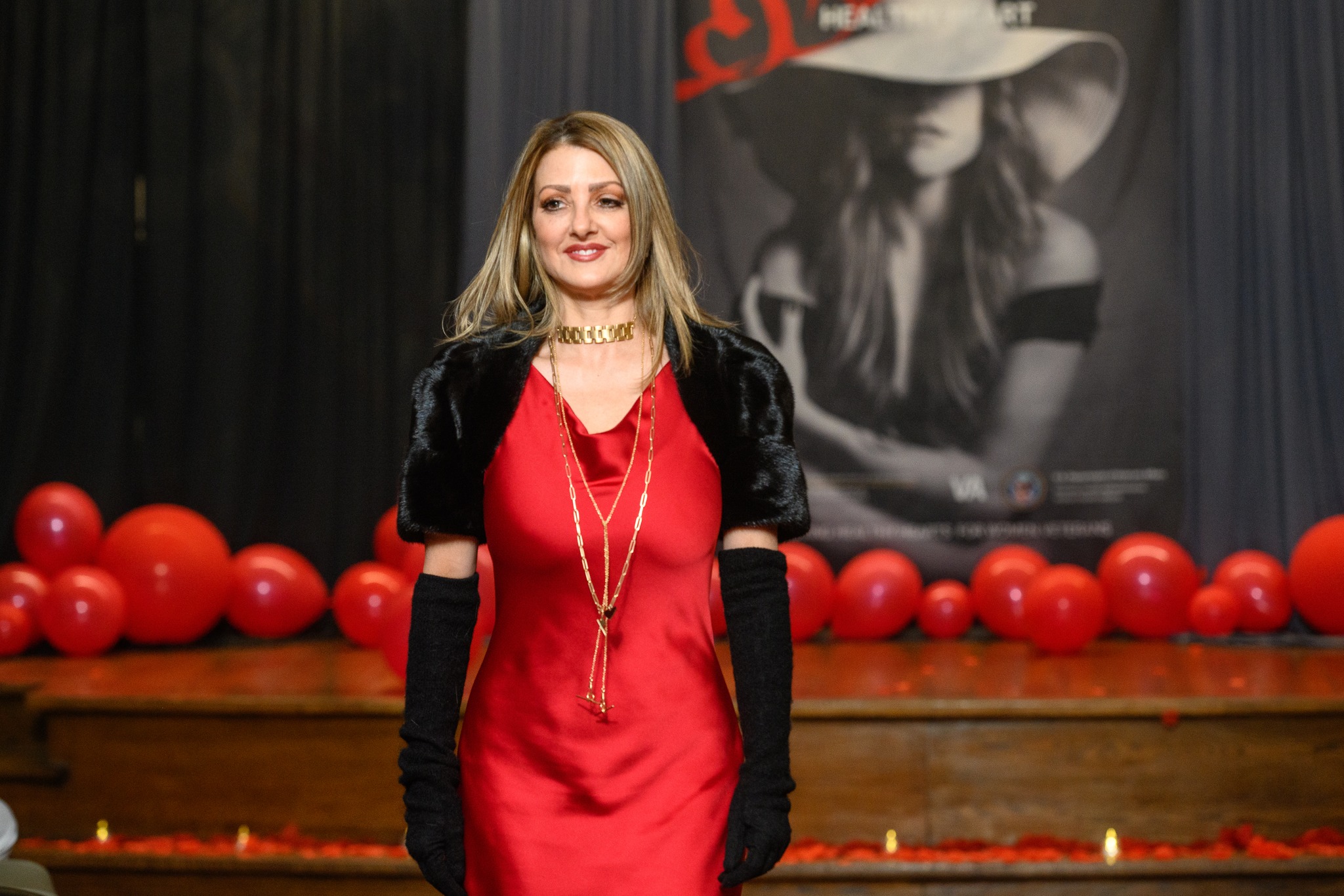 | 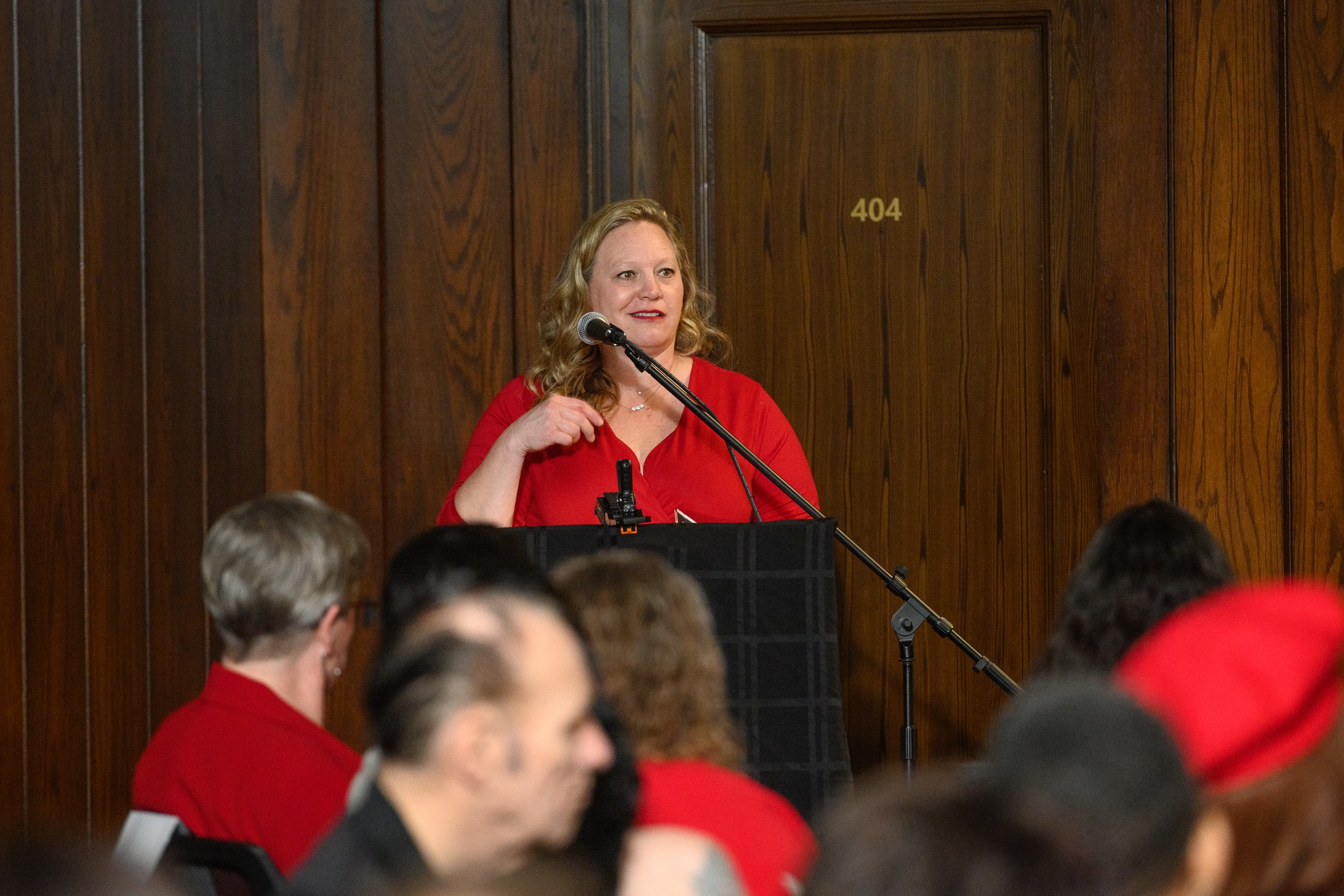 |
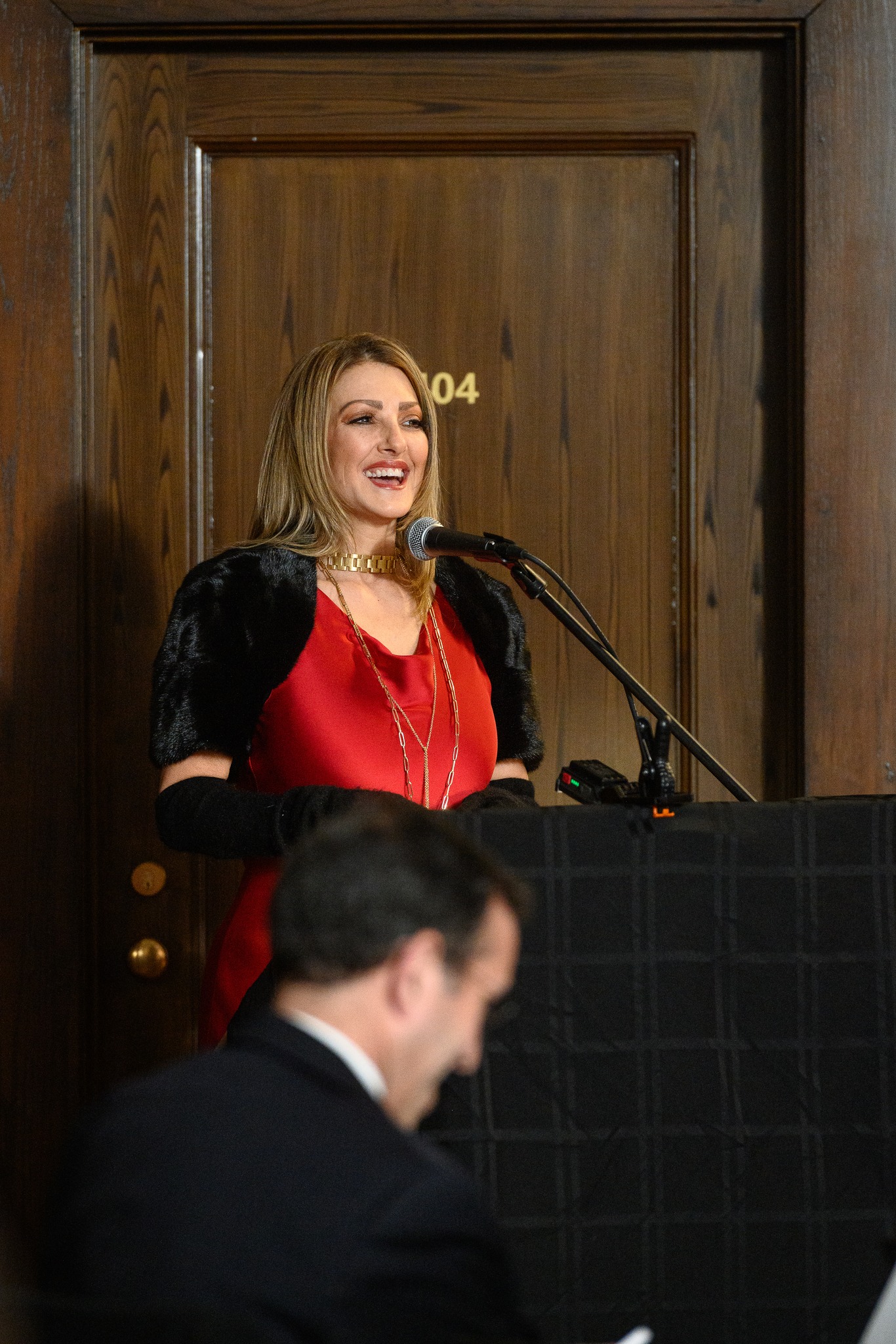 | 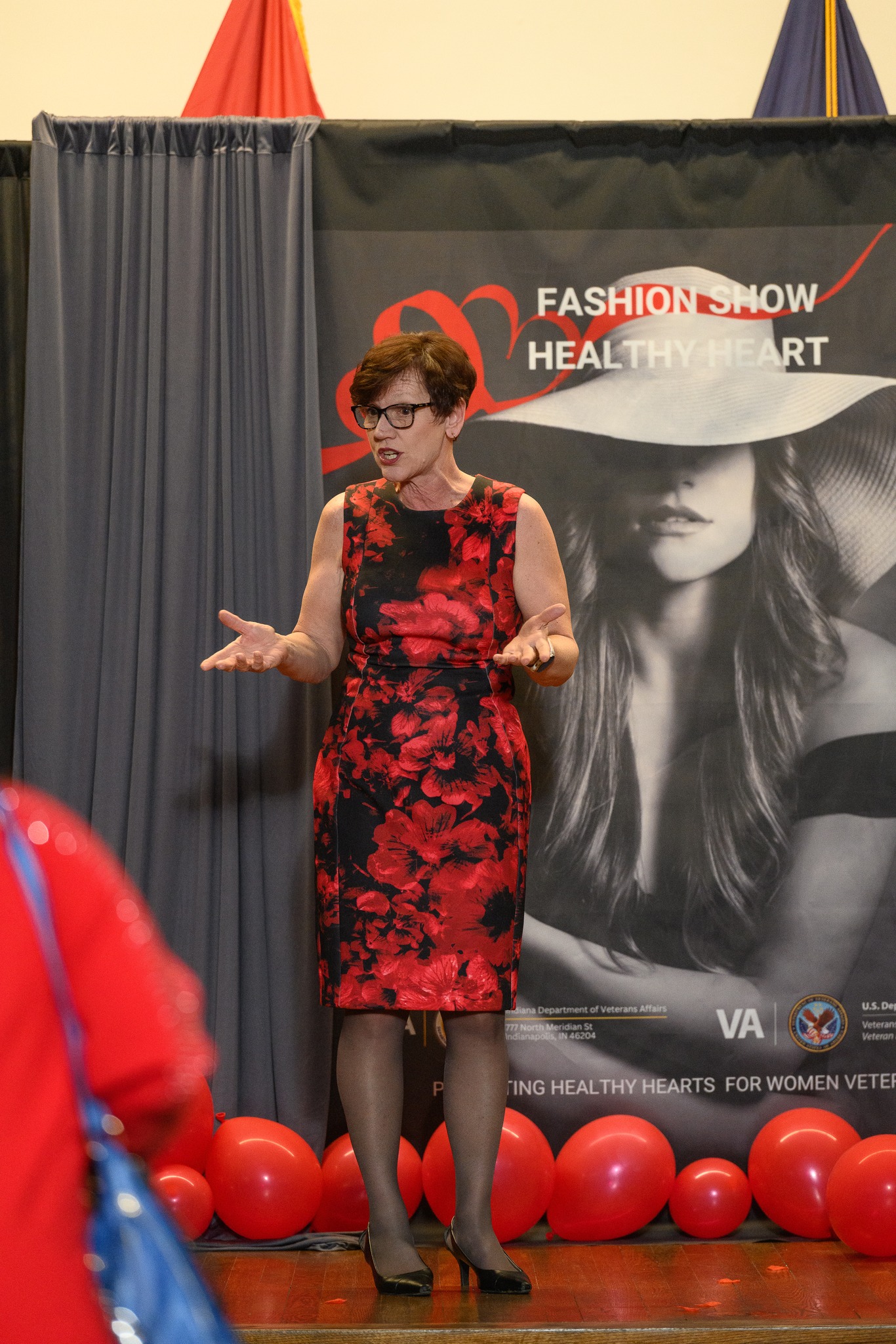 |
IVMC Expansion Project
Thursday, February 29, 2024
Indiana Veterans Memorial Cemetery Expansion Project
New entryway to the Indiana Veterans Memorial Cemetery |
New Columbarium with four interments |
Avenue of Flags |
Surviving Pearl Harbor
Tuesday, January 2, 2024
Surviving Pearl Harbor: A story of three Indiana brothers who beat the odds with Courage, Resiliency, and an unrivaled Sibling Bond
(All historic images are courtesy photos given by Ivan's family and current photos are taken by Salon Osborne.)
On Dec. 19, 1940, four brothers made their way from Taswell, Ind., located in Crawford County in Southern Indiana, to Louisville, Ky., to enlist in the U.S. Navy. The threat of the United States engaging in World War II was imminent. Brothers Ivan, Edward, Melvin, and Maurice Atkins wanted to “see the world,” and they believed that the best way to do it was aboard a ship.
Ivan, Edward, and Maurice were accepted into the U.S. Navy, but the youngest brother, Melvin, was only sixteen at the time. Melvin was permitted to serve with the Merchant Marines for one year, and if he still wished to join the Navy after a deployment crossing the Atlantic to deliver fuel to the Allies, the Navy would welcome him. If not, he would be granted an Honorable Discharge from the Merchant Marines.
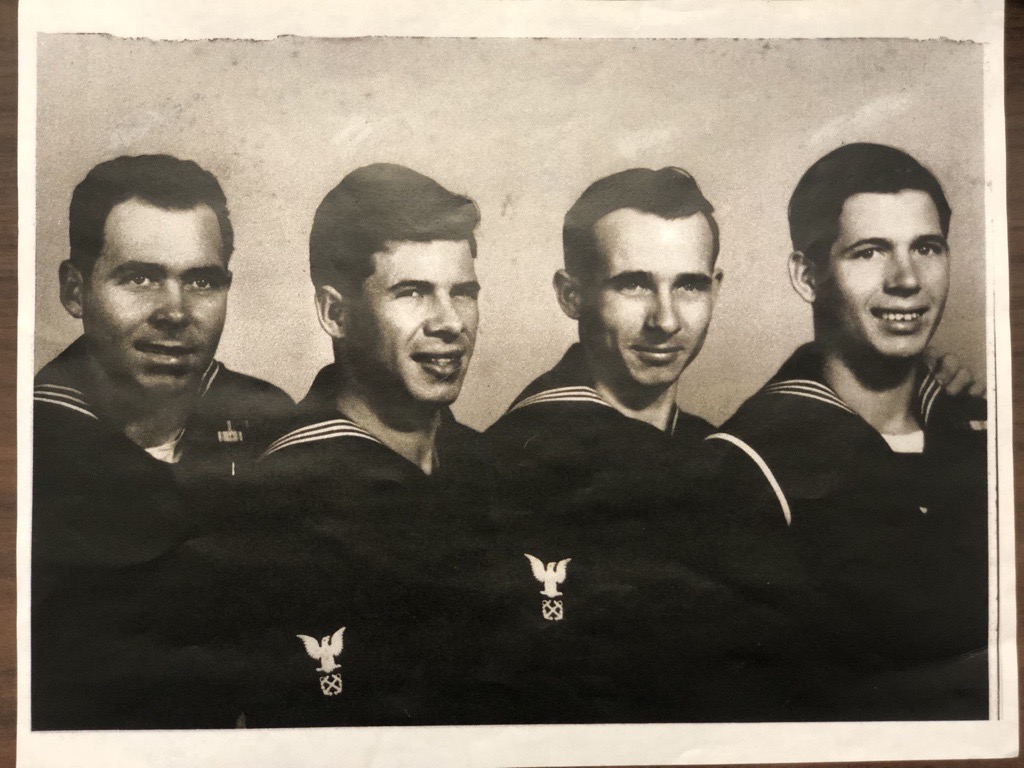
“Traveling and seeing the world seemed an exotic expedition to my dad,” states Ivan Atkins’s son, Alfred. Ivan Atkins recently celebrated his 101st birthday and is the last surviving brother of the four who enlisted to serve our country during WWII.
Ivan Atkins was born on Nov. 15, 1922, and is one of eight children born to Esther Dearborn Atkins and Wilson Atkins of Taswell. One hundred years ago, the family farm was a classic story of having a few cows, chickens, and ducks and growing organic produce before it became a trend. The Atkins family farm was known for selling watermelons within the county. The farm also produced sorghum.
One year later, with Melvin off to serve the war effort in a different military branch, the other three Atkins brothers were all assigned to the USS West Virginia. Their ship was part of the Pacific fleet stationed at Pearl Harbor.
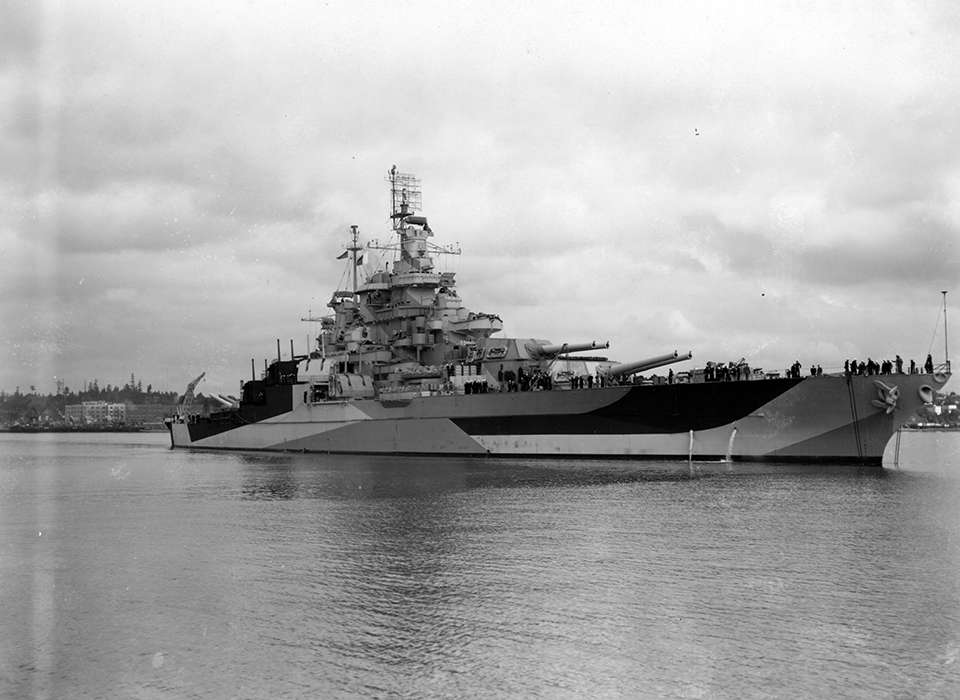
On the morning of Dec. 7, 1941, Ivan, Edward, and Maurice were with the rest of the crew on the main deck for a full dress inspection. The USS West Virginia is a Battleship, BB Class, and was positioned fourth out from the docks, with the most exposure to open water. During dress inspection, the USS West Virginia was hit by four torpedoes. The captain ordered everyone to their battle stations, but many never made it to their posts. Another order issued by the captain was to open up ports on the other side of the ship so it would sink evenly in shallow water versus capsizing. This strategy saved hundreds of lives.
Scrambling to his post, Ivan could not make it to his gun down on the 4th deck below. Above the torpedoes’ damage, Ivan could climb back up to the main deck once the captain commanded the sailors to “abandon ship.”
“My dad shared that he could not see anything below the main deck and struggled to find his way back up. He saw a gleam of light above him and was able to climb up a maintenance ladder near a gun to reach the top deck. He could jump off once he reached the railing,” shares Alfred of his father’s experience.
Fortunately, Ivan evacuated early, as hundreds of men burned to death from burning oil on the surface of the water as the USS West Virginia sank.
Ivan, and eventually Maurice, swam to safety through an oil spill that had not yet been set ablaze.
“To be in a lucid state of mind and to make the correct calls when needed most, like the opening of port holes on the other side of the ship, saved lives,” shared Tonette Ramion, Alfred’s daughter and Ivan’s granddaughter. “We are grateful to the ship’s captain for implementing the right battle strategy at the right time!”
All three brothers successfully abandoned ship, but amidst the chaos of the attack, none of them knew if their siblings survived until the next day.
Edward had decided not to jump into the water, instead opting to walk across a gangplank to an adjacent ship. Once he stepped foot on that boat, he belonged to that captain. Edward’s newly adopted ship was on fire, and its captain refused to issue the order to abandon it. This resulted in the sailors fighting fires most of the day until the command was finally given to abandon the vessel.
Edward had jumped into the water and was swimming through a relatively shallow area when a Japanese bomb dropped ten feet in front of him, but it was a dud. He kept swimming. Edward Atkins is listed in the history books as “the last confirmed survivor of Pearl Harbor” due to the muddled clerical mess of changing ships during the attack.
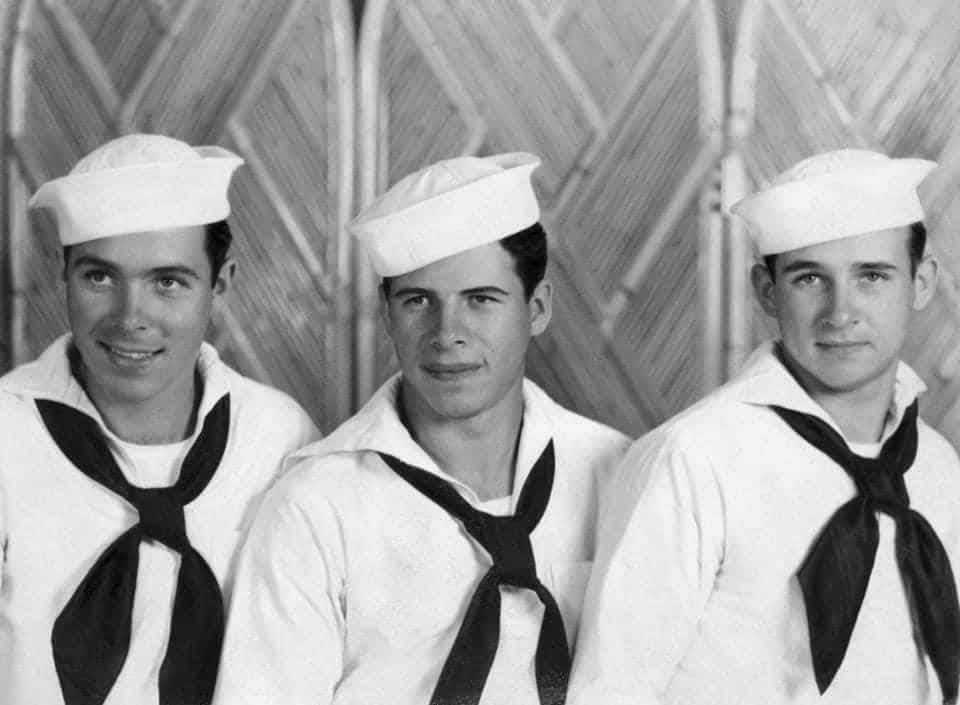
With thousands of misplaced sailors, reassignments were necessary. Initially, Ivan and Edward, who would spend the entire war together, were assigned to the USS Turkey, a minesweeping ship but was initially utilized at Pearl Harbor as essentially a wrecker, transporting damaged ships to various docks for repair. Maurice was assigned to a different ship for the rest of the war. Ivan and Edward were later transferred to the USS San Jacinto, an aircraft carrier with an interesting history.
The USS San Jacinto was one of the most actively engaged warships of the North Pacific Fleet and one of the highest priority targets for the Japanese. A pilot assigned to the ship, considered the youngest Navy pilot in history at that time, was future President George H. W. Bush. Ivan served as a gunner on the USS San Jacinto and had an eye for spotting enemy planes, specifically kamikaze planes, on the horizon. A tragic part of Ivan’s experience was losing his gunmate six times during his deployment.
One recollection involved successfully neutering a kamikaze plane, with the cockpit landing on the deck without its wings. Ivan and a few others came to the rescue of the Japanese pilot, only to discover there was no way to extract the pilot from his seat.
Ivan’s muster papers show an honorable discharge date of Nov. 27, 1946. Ivan joined the Navy at age 18 and married his childhood sweetheart, Dorothy Mathers, before enlisting. During his service, he earned eight American Defense Stars and two stars for the Philippine Liberation.
“One of the most traumatic stories my dad shared with me was when he was ordered to close a hatch on the ship due to torpedo damage below, and there were still fellow sailors trapped underneath — he had to close the lid on some of his bunk buddies,” said Alfred, emotionally. “My dad saw so much action. He described it as ‘four years of blood and guts.'”
Upon return at the age of 24, Ivan placed his medals inside a cigar box and buried them in the woods, telling his wife, “No man should ever be recognized for killing others.” There was no access to post-war therapy then, and Ivan suffered from profound PTSD. He had been raised in the church and felt he had committed sins by killing people.
“My dad had a 5th grade education in a sheep shed. Literally, he had to walk to school one mile away through a field with a bull in it, which he had to strategically evade, and his school was inside a livestock shed,” states Alfred.
Ivan saved nearly all of his pay from the Navy and combined with his mother’s earnings from working in an airplane factory, they bought a 160-acre dairy farm for $1,700 in 1946. Ivan’s PTSD interfered with a successful run as a farmer, and he worked in woodworking factories in DuBois County.
“My dad had eight children and somehow took care of us and my mom. He was a small man, both physically and financially; he comes from the poorest county in the state and has survived to 101 and is still going,” shares Alfred. “Recovering from that war was a giant step. We all battle our own way through life – and my dad did it without any [mental health] support. Gives us all hope. I have seen a lot of people going through a tremendous amount of stress, but they keep on going and don’t give up.”
“My grandfather had a strong faith, which played a large role in his life. There’s no getting over stuff like that; you have to replace it with something else, and his faith replaced the trauma with love and joy,” shares Tonette sympathetically. “Back then, you didn’t sit around and talk about your anxiety. You pulled yourself up by your bootstraps and did what you were supposed to do. My grandfather was killing Japanese kamikazes at age 19. I cannot imagine the impact that had on him or anyone else. The historical part is amazing – what he went through — I cannot imagine going through that at such a fragile age.”
All four brothers survived the war. Maurice and Edward both lived to 79 years old. The youngest brother, Melvin, who did opt for that Honorable Discharge after serving with the Merchant Marines, died at 93. Ivan, still going at 101, is among the last of the Greatest Generation.
105-year-old Navy veteran recalls World War II, life in the WAVES
Friday, March 4, 2022
105-year-old Navy veteran recalls World War II, life in the WAVES:
“We were a patriotic generation.”
By Kirsten Clark
Indianapolis -- Hellen Eloise Holder Guthrie was a 24-year-old working as a secretary at a law firm when a pair of Navy recruiters shared just how exciting a life as a sailor could be. So, in August 1943 the Spencer, Ind., native joined the W.A.V.E.S (Women Accepted for Volunteer Emergency Service) of the U.S. Navy.
More than 100,000 women would answer the call to be a WAVE, marking the first time women were permitted to join in capacities other than nursing.
“The Navy sounded interesting,” she said. “My brother was in the Army, and he worked alongside General Patton, even.”
Guthrie was assigned to Hunter College in the Bronx to get acquainted with the Navy and learn what her next role would be. When she completed her time at Hunter, Guthrie moved on to yeoman school in Stillwater, Okla. It was there she was selected to work in the elite intelligence arm of the U.S. Navy.
“I went to the first training course at Hunter College, then went to yeoman school,” said Guthrie. “There were nearly 400 students who began, and they only took the top 40 students to work in codes and cyphers.”
Petty Officer 1st Class Holder became a Specialist Q and headed to Washington, D.C. where she would remain, working as a cryptographer in the Japanese section until the end of the war.
“The Navy is a wonderful place to be and to get an education,” Guthrie said. “We learned the war had ended when they came in and told us ‘Germany had surrendered’! So, we went down to Dupont Circle and had a Coke to celebrate. We were a patriotic generation."
Not only was Guthrie part of the first class to enter the Navy’s program at Hunter College, but she was also part of the first group of occupants to enter the newly-built Naval Barracks in Washington, D.C.
“We lived in the first WAVE living quarters ever built for the Navy, but they encouraged you to move after you made the rank of 2nd class because the barracks weren’t big enough to house all the new people coming in,” she said. “We were allowed to go find our own place to rent, but we still ate our meals in the mess hall.”
Guthrie rubbed shoulders with some famous people during her time in the Navy, from first ladies to movie stars.
“If you went to dinner and fried chicken was on the menu then you knew Eleanor Roosevelt was having a meal there,” said Guthrie. “I saw her many times there; she even would sit down right beside you and eat.
“D.C. was a wonderful place when I was there. I even met Robert Taylor – he was a lieutenant in the Navy.”
When the war ended, Guthrie returned to Spencer where she lived with her maternal grandparents. Her brother returned as well, bringing a friend with him who would later become Guthrie’s husband of 62 years.
“Ralph was covered in dirt from a motorcycle ride the first time I met him,” Guthrie said. “He didn’t know how to pick green beans from the garden for dinner, which I thought was funny. He was pretty endearing and very charming - a good, good man.”
Ralph Guthrie served as a mess sergeant in the U.S. Army during World War II. After the war, he worked as a baker in Irvington, Ind. The two had a son, Gene, and later lived in Indianapolis. Guthrie was 91 when he passed away in 2009.
When Gene entered high school, Guthrie went to work at the Indiana Statehouse, serving in various roles in politics for many years. She met Presidents Ronald Reagan and Gerald Ford, was host to Nancy Reagan and Barbara Bush, and was awarded the Sagamore of the Wabash in 1983 for outstanding service to the state by then-Governor Robert Orr.
At a Spencer High School reunion in 2012, Guthrie was the last living graduate from her high school class of 28 students. On April 30, she will celebrate 105 trips around the sun.
“I never thought I’d live this long,” she said. “There really is no secret to it, but I’ve lived an interesting life. My time in the Navy was an experience that you never forget, and it was something that I was very happy that I did, particularly because of the people you get to meet and the opportunities. It was wonderful.”
Bunker Labs Working to Launch Veteran Entrepreneurs
Friday, March 4, 2022
Bunker Labs Working to Launch Veteran Entrepreneurs
by Kara Kavensky
Bunker Labs provides community, programs, and courses to help military veterans and military spouses start and grow successful businesses and startups. Lt. Col. Shawn Gardner, [RET], served for 23 years with the Army, where he was known as a "fixer". During his service, Gardner had been assigned to underperforming areas and turned them around. Since being honorably discharged four years ago, he's applied his leadership skill set to entrepreneurial efforts.
"My grandfathers and great uncles returned from WWII and started thriving small businesses in their local communities. It was their grit and determination that drove them to succeed, well beyond their original goals and aspirations," says Gardner. "They took the lessons they learned during the war and apply them to daily business practices.
Bunker Labs inspires Gardner to harness this same entrepreneurial spirit that our Greatest Generation possessed.
"Their generation ushered in one of the largest economic boons in our nation’s history. It’s my generations turn to follow in their footsteps. Bunker Labs is a great venue to facilitate new possibilities," adds Garner.
After WWII, 50% of Veterans owned their owned businesses and that number is now 5% [of post 9/11 Veterans]. Bunker Labs hopes to inspire more veteran-owned businesses and provide the support they need to succeed.
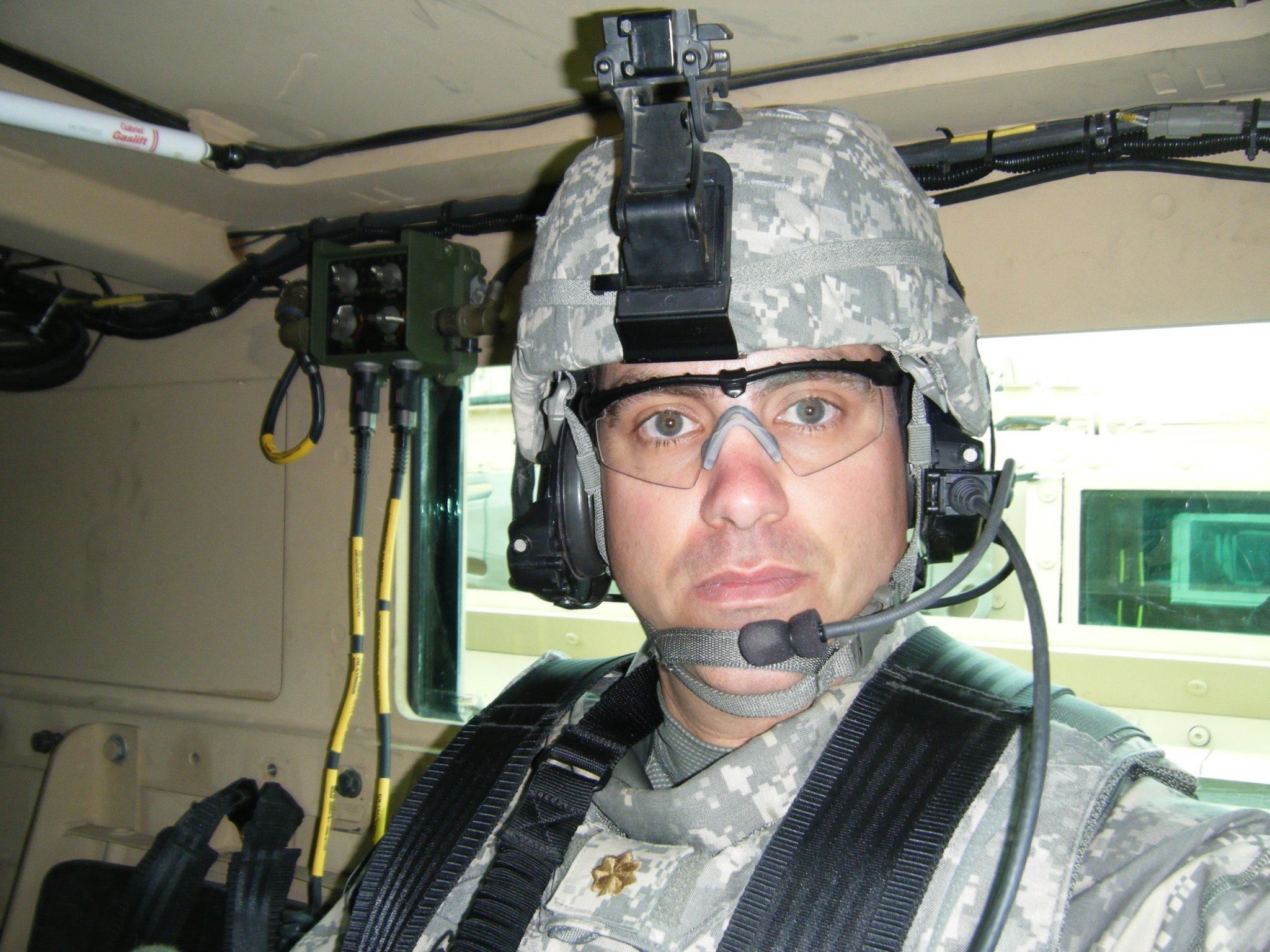
Lt. Col. Shawn Gardner, [RET] pictured when he held the rank of major during his Army service. (Courtesy photo)
In Indiana, Gardner has partnered with Courtney Zaugg to stand up a Bunker Labs chapter in Indiana.
Zaugg is a military spouse. Her husband, Sgt. Nathan Zaugg, used the GI BIll after being honorably discharged in 2005. During his service, Zaugg served two tours in Iraq with the United States Marine Corps. Once he graduated with a masters degree in Criminal Justice and Public Safety in 2011, Zaugg worked as a social science researcher, which placed him in front of a computer screen every day.
"He hated working at a desk and started a side hustle performing small remodeling projects to satisfy his passion for working with his hands, creating beautiful homes," says Zaugg of her husband. "So in 2017, we started a small remodeling company when our daughter was about six months old."
Starting their first company was difficult.
“It was painful to see just how hard it is to start and scale a business, even with our network and connections,” says Zaugg, who is an entrepreneurship-led economic development consultant for Plaka. “It shouldn't have to be this hard to start a company, especially for Veterans.”
Many communities talk a good game when it comes to supporting and investing in entrepreneurship, but in many cases, that is not the reality when it comes to supporting the specific needs of veteran entrepreneurs.
“Entrepreneurs and small businesses must be central to a growth and sustainability strategy for economies. Why? Because I’ve seen firsthand how investment in an entrepreneurial ecosystem increases prosperity and attracts others as a center of gravity,” states Courtney.
Data supports her observation. Businesses under five years are creating the bulk of jobs in our economy, and have for years. Simultaneously, while building her consulting firm, she spoke with people across Central Indiana about the need to support veteran entrepreneurs.
Bunker Labs gives Courtney the opportunity to help other veterans and military spouse entrepreneurs have an easier route than she and her husband did when starting Zinc Contractors.
“I didn’t have the privilege to support and be with my husband while he went to war, but Bunker Lab gives me an opportunity to serve him and others like him now,” says Courtney, a volunteer with Bunker Labs.
Bunker Labs is partnering with NEXT Studios, a Venture Studio located in Indianapolis and working regionally across Indiana and beyond to help support entrepreneurs. As part of the Bunker Labs launch in Indiana, they are hosting a (no-cost) Entrepreneur Discover Weekend April 29th — May 1st.
Visit: https://nextstudios.org/veteranDW/ to learn more.
Vietnam War Veteran awarded Purple Heart 53 years after being wounded in action
Tuesday, December 28, 2021
Vietnam War Veteran awarded Purple Heart 53 years after being wounded in action
By Kirsten Clark
CORYDON, Ind. – After being wounded in action 53 years ago in the Vietnam War, U.S. Marine Corps veteran Frank Bill was awarded a Purple Heart during a ceremony this month. It was an honor the Bill family had been pursuing for more than 16 years when they first submitted his application.
“We are just absolutely thrilled this day has finally arrived,” said Julie Bill, Frank’s wife. “Frank is finally getting what he deserves for his service in Vietnam, and the day has come when we can honor him properly. It took 53 years to get here, but who’s counting?”
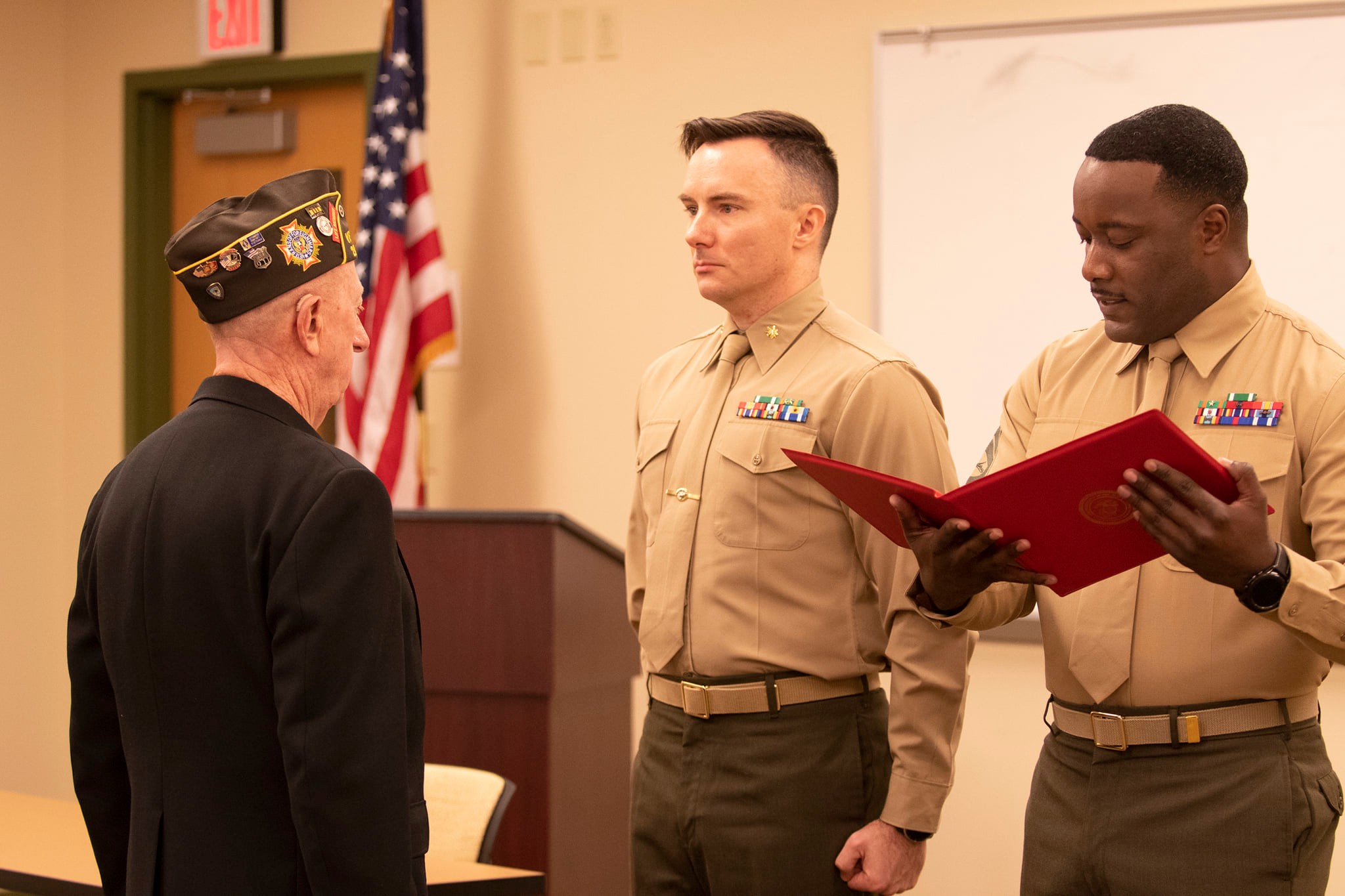
A ceremony was held Dec. 16 at the Harrison County Government Center in Corydon, Ind., with Bill’s family and friends to honor his bravery in combat. The citation was read by U.S. Marines Gunny Sgt. Laronald McKinney and Maj. Charles Clark. Harrison County Veteran Service Officer, Tara D. Avis, also attended and was a key figure in Bill’s final approval for the Purple Heart.
“We are so thankful for Frank’s service; he is so brave to stand where so many would not dare to kneel,” said Avis. “I hope this was everything he hoped it would be 51 years after his service and 16 years after starting this process.”
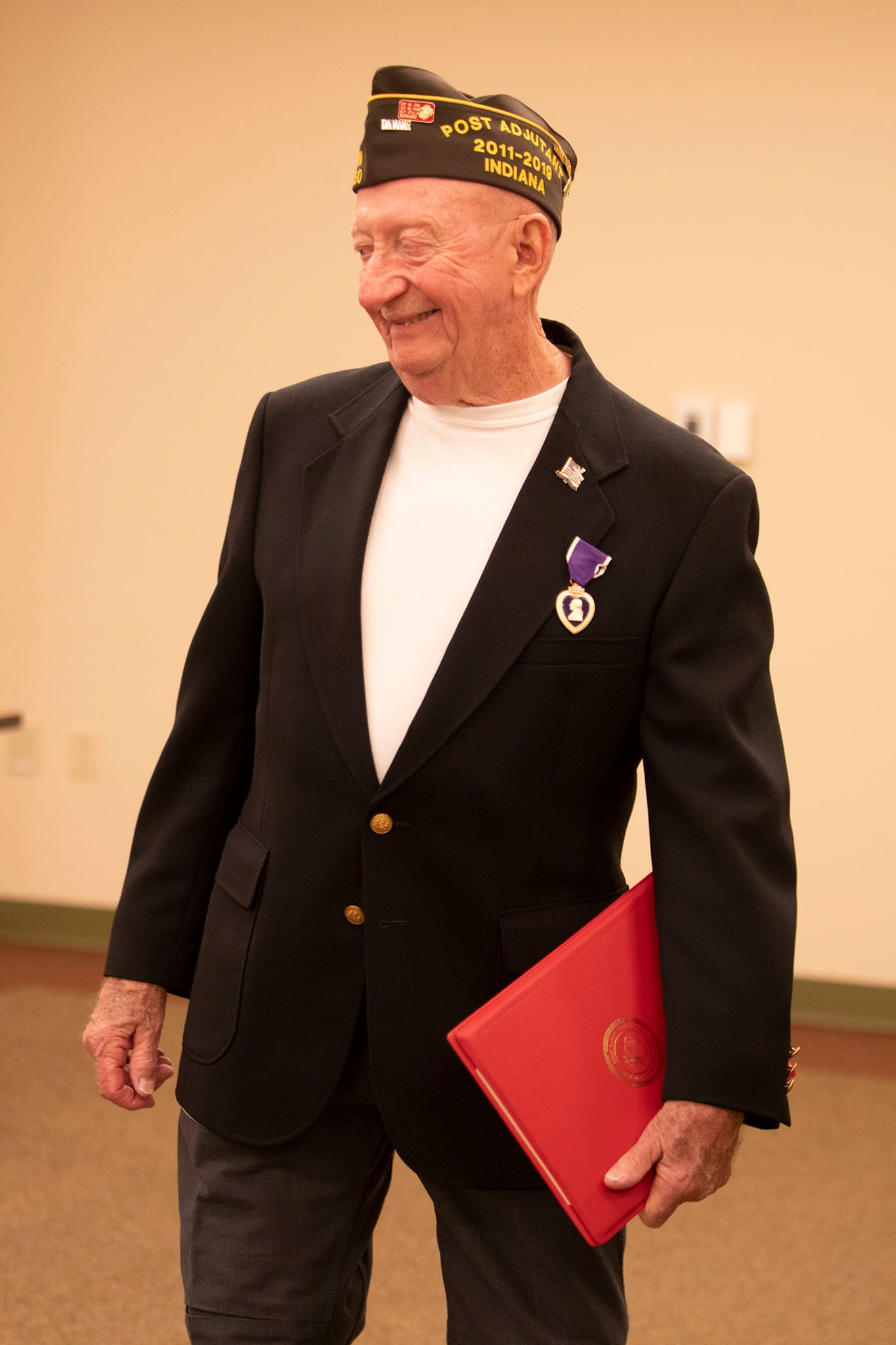
Bill served in his beloved Marine Corps until 1970. As a lance corporal, he was wounded during a routine road clearing operation. Bill’s platoon entered an area where mines had been planted in the road. As he swept the area, a 40-pound anti-tank mine was manually detonated by the enemy, causing blast injuries to Bill’s face and much of his body.
“Frank weighed a buck-20 and wore birth control glasses, but he was a born Marine. He didn’t know it until he went to boot camp and that brought it out,” said Vaughn Seruby, a fellow Marine who served with Bill in the 1st Engineer Battalion, C Company, 3rd Platoon. “We went out on the roads, clearing land mines and we knew we could be ambushed at any time, and we still went out. We crawled around on the road looking for them [land mines], knowing we could be vaporized in an instant, so it took great courage. I admire him and guys like him.”
Frank Bill didn’t want to pursue a Purple Heart initially but credits his wife’s persistence for finally getting him to start the process of applying in 2005.
“I was just trying to let go of my experiences in the war, and I didn’t care to pursue the Purple Heart early on,” said Bill. “But my wife really wouldn’t let it go – she was concerned for my health mainly - it was her persistence that got me into VA healthcare and started the process of looking into how to receive a Purple Heart.”
The Bills began writing letters to the Department of the Navy about the Purple Heart medal, which responded in turn with a request for more information that was required to document the event that caused Bill’s injuries.
“We didn’t get a lot done at first because we really didn’t know how to go about it,” Julie said. “This was really something that developed over the years as we continued to add evidence to his application each time the Purple Heart was denied. It was a great struggle just to get the medical records from when he was in Vietnam because Soldiers and Marines were treated on the battlefield by corpsmen, not doctors.”
The search for answers was a learning process for the Bills, and with each denial they grew weary of pursuing the medal. Bill was forced to recall the events of his service and medical care in Vietnam many times, aggravating his PTSD, causing anxiety, and increasing the frequency of his nightmares.
The couple eventually connected with Avis and received the help and support they had so long needed. From her efforts to compile evidence to her encouraging attitude, the Bills pressed forward ever hopeful for a positive outcome.
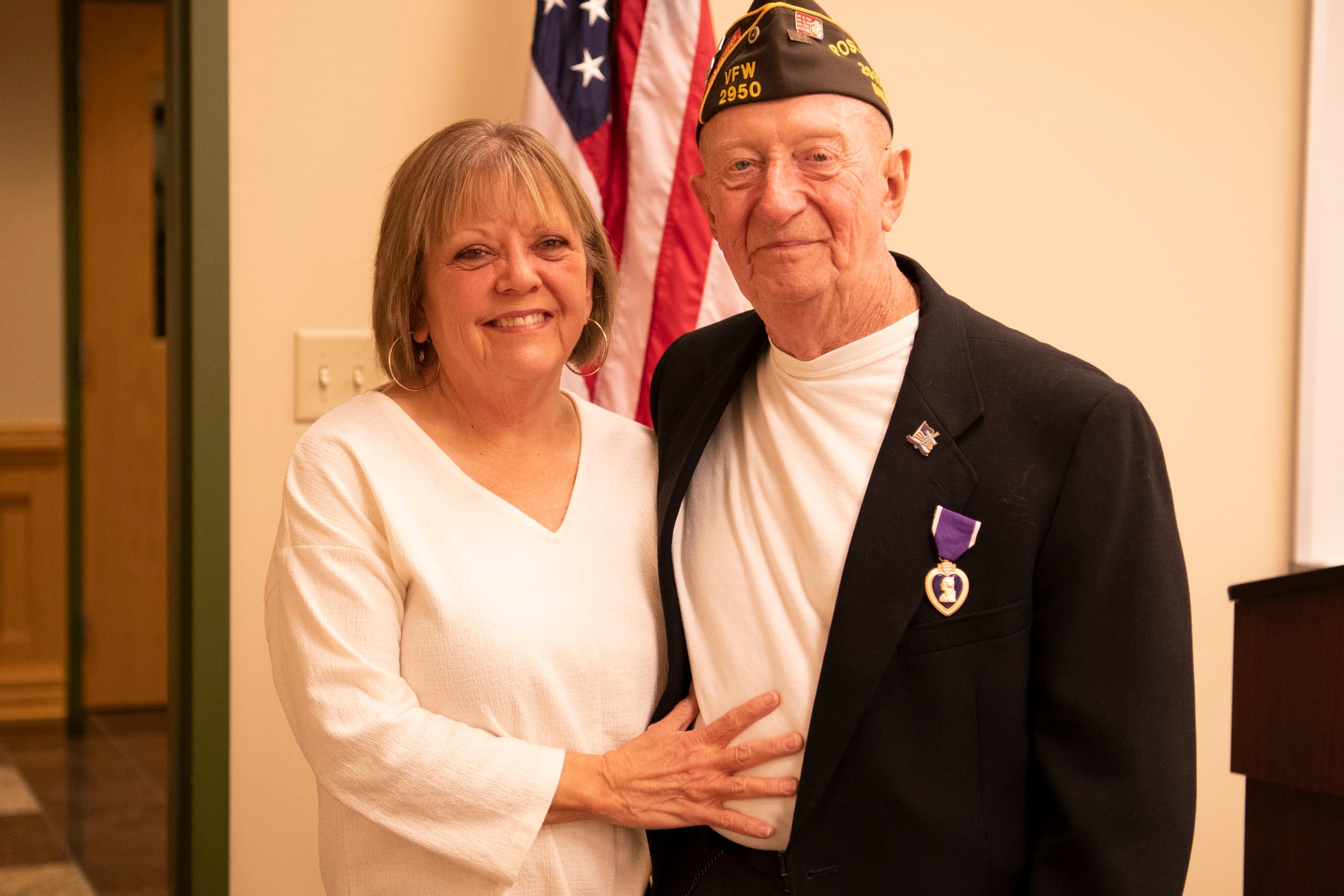
“His injuries are well-documented, and he currently is under VA medical care for this service-connected disability,” said Avis. “He deserves every bit of this Purple Heart and more.”
“His application was just overlooked for so long; we were tired. I even wrote to President Trump in the hopes it would be approved quicker,” said Julie. “We at last met with Tara, and she submitted medical paperwork and justification and proof. Thanks to her and Frank noticing a discrepancy in the record that he was injured but never evacuated from theatre, we finally made it happen.”
Bill is a proud veteran and has used his time in Vietnam to help others. He is a member of American Legion Post 133 in Alton, Ind., and the VFW Old State Capitol Post 2950. Frank and Julie have lived in Corydon for many years, raising their blended family together since 2003.
Bill credits his Purple Heart award to Avis and his wife Julie, along with fellow veterans Tony DeBlasio and Seruby, who served as witnesses to the event in 1968 that changed Bill’s life forever.
“It gives me great pride and makes me feel better [knowing my injuries weren’t for nothing], especially after watching other Marines get killed, knowing they are your own and now they’re gone,” said Bill. “It is nice to be recognized, but I wish my fellow Marines were still alive. I’d have wanted to see them live their lives instead.”
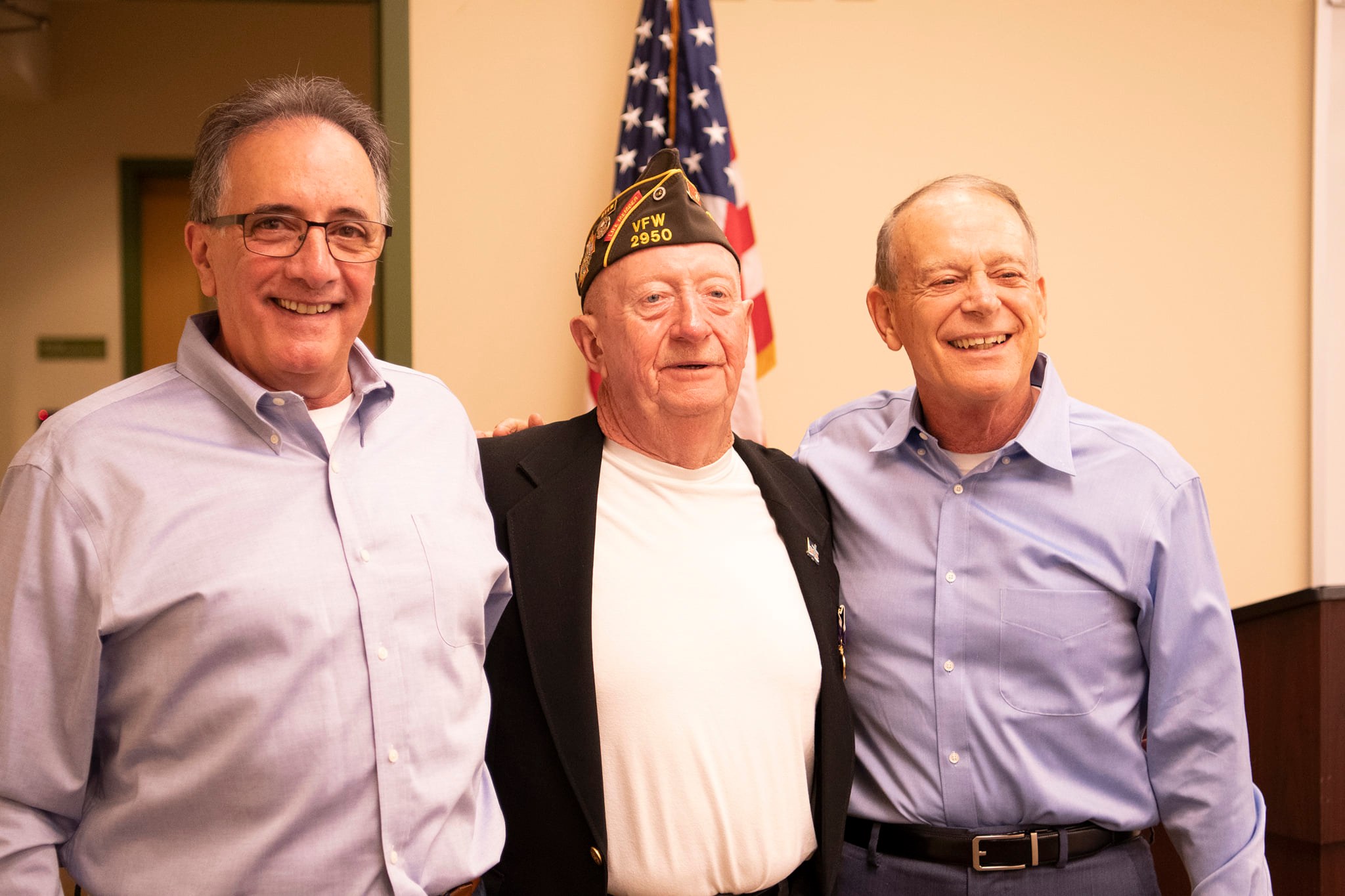
On mission for Dubois County veterans
Wednesday, October 27, 2021
Gary Love’s first steps into the Dubois County Veterans Service Office were like stepping back into the familiar territory of his many years of service in the Army National Guard.
Love took over as the new Veterans Service Officer on August 31.
With a career spanning 25 years — 18-and-a-half on active duty — in similar settings, Love can appreciate the framed photos of the seals representing the military branches adorning the wall in his new office and the government-issued paperwork filed in his desk. “My first step in here I thought, ‘I’m back in a recruiter’s office or I’m back in MEPS (Military Entrance Processing Station),’” he laughed.
Love spent more than a decade of his military career recruiting and retaining soldiers for the Army National Guard. To this day, soldiers he recruited still call asking for help with certain aspects of their military benefits now that they are out of the service. “Being a recruiter, I am familiar with the system,” he said adding he’s had to do it for himself as well.
Whether he is driving someone up to Indianapolis to ensure they get an account set up correctly or just walking a veteran through some tough paperwork, Love has a passion for helping servicemen and servicewomen.
Since taking on the new role, he’s taken some steps to ensure veterans know they are welcome. He removed a reflective covering from the front door to open the office up to the outside world. He has also ordered a flag stating “Veterans Welcome”.
The office located on the side of the Dubois County Annex building at the intersection of Sixth and Main streets is currently open Tuesdays, Wednesdays, and Thursdays from 8 a.m. to 4 p.m. Love acknowledged the limitations those hours could have on some locally employed veterans. He has plans to work with local employers to meet veterans where they work during lunch hours.
He is also getting connected with the many area veterans organizations to build relationships and send out information to their members.
There have already been humbling moments. Last week, a Vietnam veteran — a Purple Heart recipient — stopped in asking what services he was eligible to receive. “I was able to get him started on some benefits,” said Love. “He served 50 years ago and had never applied for benefits.”
It is rewarding to help these men and women who have served. That service is a common bond between him and those he helps. That same sense of esprit de corps is what drove him to apply for a commission and serve in Iraq. “I saw a lot of 20-year-old guys I had recruited heading over to Iraq,” he explained.
Love decided he would follow the advice others had given him and seek a commission as an officer.
In 2007, he headed back where his military career had started; Fort Benning. He went through boot camp there when he was 18 after joining the Army on a buddy program. His friend got a promotion to private second class and Love found a career. Now, he was attending Officers Candidate School as a 38-year-old Sergeant First Class.
He was in formation when General David Patreus spoke about the upcoming surge in Iraq. The same speech Patreus would give to Congress the next week. Soon after returning to Jasper, his unit was deployed.
They were assigned to handle convoy security — a mission that the infantry unit was not necessarily trained to do. “You take a bunch of infantry guys who are used to kicking down doors and going after the enemy, and you put them in Humvees, MRAPs (Mine-Resistant Ambush Protected vehicles), and armored vehicles,” Love explained. “It was a unique challenge.”
Packed with soldiers, these convoys would crawl along roads and paths to the destination. It was tedious. A 50- to 60-mile trip could take up to four hours. Fighting complacency, the troops had to be alert for improvised explosive devices as the convoy ambled along. Love’s job was to plan the routes based on the intelligence he had available over the previous 24 hours.
“I planned and executed 34 of those missions,” he said. “We were rather lucky. We found almost all the IEDs that targeted our convoy, but we did have a couple detonate on us.”
They didn’t lose any soldiers but there were a few Purple Hearts and Combat Infantry Badges issued.
Returning to the U.S., Love found it difficult going from a hyper-sensitive and well-oiled machine to the chaos of civilian life. Things like mowing the yard, paying the bills, and dealing with arguing kids can be overwhelming for a combat veteran.
Love acknowledged the current situation in Afghanistan is likely going to impact a lot of men and women who have served there.
“There are guys and gals that are frustrated right now,” he said. “I want them to know we have resources for them.”
This experience gave him insight into how other veterans feel returning home. He feels it also allows him to help others coming from the same experiences.
Love acknowledged the current situation in Afghanistan is likely going to impact a lot of men and women who have served there.
“There are guys and gals that are frustrated right now,” he said. “I want them to know we have resources for them.”
He wants them to know they — like any other Dubois County veteran — are welcome anytime in his new, familiar office as he settles back into doing what he loves.
“I told my wife that I am blessed,” Love said. “I feel like this is what I am meant to do the rest of my work life.”
Love and his wife, Angela, live in Ireland. They have two grown sons, Travis, 25, and Kade, 20.
It’s never too late: Ninety-six-year-old World War II veteran earns high school diploma
Friday, October 1, 2021
It’s never too late: Ninety-six-year-old World War II veteran earns high school diploma
SOUTH BEND – Mishawaka native and U.S. Navy veteran Robert Plasschaert received his high school diploma this summer in a small ceremony surrounded by family and friends. But unlike most high school grads, Plasschaert wasn’t busy making plans to attend college or enter the workforce. At the 96-years-old, Plasschaert was accomplishing a goal he never thought possible.
Looking Back
As news of the Japanese attack on Pearl Harbor reached the airwaves in Mishawaka, Indiana, a 15-year-old Plasschaert and his friends listened to the radio broadcast in horror inside Bonnie Doon’s Ice Cream Shop. The USS Arizona descended to its watery grave and the young men were filled with a patriotic fervor. They raced to the local military recruiter’s office determined to join the fight.
“Entering WWII was a big thing for all of us young guys, we were fired up,” said Plasschaert. “None of us were old enough to join the military, except one, and wouldn’t you know it, he was assigned stateside during the entire course of the war and never saw a bit of action.”
Emotions were running high after the attack on Pearl Harbor and many young Americans were motivated to join the war effort. Plasschaert had to wait two more years before he was able to join the U.S. Navy. He eagerly left high school in the middle of his junior year and became one of the first radio operators on board the newly commissioned destroyer USS Samuel S. Miles, nicknamed the “Sad Sack Sammy.”
During Robert’s time on “Sammy,” his crew and he protected ships in the Marshall Islands, sunk a Japanese submarine, guarded Iwo Jima invasion forces and provided cover for Okinawa bombers. They only suffered one casualty during their tour when one of the gunners on the ship was killed in a kamikaze attack. The ship’s crew was nicknamed “the Miracle Boys,” and earned a reputation for escaping harm while seemingly caught in desperate battles where many others lost their lives. The destroyer acted as bait so often they even managed to fool Japanese ship crews into backing down from aggression.
“We ran into the Japanese Navy once as we turned the corner around an island. We turned the ship around and they started after us, chasing us for a while, even gaining on us,” Plasschaert remembered. “But they suddenly slowed their pursuit and began to turn around. We realized it was because they thought our ship was leading them into a trap. But truth was, we were all alone and it was just as well they turn around because we would’ve stood against them by ourselves if they had continued.”
Plasschaert’s tour of duty ended in 1946 when he received news his father had perished in a car accident. He returned home to provide and care for his mother and sister. Plasschaert received an honorable discharge from the Navy and made his way back home to Mishawaka.
“I had to go right to work. It was more important,” he said. “If you were a good worker, you could get a better job than someone with an education in those days and I was a hard worker.”
He went to work immediately, taking up his father’s job in the Major Brothers Meat Packing Company in South Bend. While many of his high school classmates returned from the war and went back to high school, Plasschaert’s family counted on him to earn a living.
“I came out of a working-class immigrant community. Becoming a salesman was like graduating to a higher class in society. I worked myself to a more independent position and worked at the gas company for a long time. Later, I got married and went into business for myself. I did well, but just never got that diploma,” Plasschaert recalled.
A Way Forward
Close family friend and neighbor, Mary McDermott said Plasschaert would often comment about how it bothered him he never got his high school diploma despite all the life experiences he had. So, McDermott contacted the Indiana Department of Veterans Affairs to see how about how Plasschaert might obtain it.
McDermott discovered a state program with the Indiana Department of Education that rewards veterans with their high school diploma if they left to join the military or were drafted. The two agencies worked together to verify Plasschaert’s eligibility and then worked with Mishawaka High School to issue his diploma. Seventy-eight years after leaving school, Plasschaert received his high school diploma.
“Bob’s family and I were able to surprise him with it,” said McDermott . “He was quiet at first, had to comprehend what it meant and how special it was. He told everybody about it for a long time after we gave it to him.”
“I was shocked. I never thought I’d get my diploma,” Plasschaert said. “It was really wonderful.”
“Everybody here was perfectly pleased to make this happen,” said John Ross, the principal at Mishawaka High School. “This is the first time we have issued a high school diploma in a case like this, and it was really nice to honor him as we did.”
Now, Plasschaert says he has accomplished everything he wanted to in life – and more.
“Even at my age, I have my high school diploma. It really is never too late.”
Dennis Wimer: We must honor those who served
Monday, September 13, 2021
No matter how the war in Afghanistan ended, we must honor those who fought during it
Dennis Wimer is the director of the Indiana Department of Veterans Affairs
Most of us recall exactly where we were 20 years ago today. We remember not just our location, but the details of the day.
I was working in New Jersey when I received a call from my wife telling me a plane just crashed into the World Trade Center. After that, all of us had trouble connecting with loved ones. One of my colleagues frantically tried to reach his wife. She had an appointment that morning in the first tower. I tried contacting former military friends at McGuire Air Force Base, but most had been put on alert and were unavailable. It wasn’t until later that week I learned a member of my church was working in the first tower that morning. His floor was hit directly.
We all remember that day. We all can never forget.
After 9/11, many Americans went to Iraq and Afghanistan to serve like so many had done before. More than 180,000 enlisted in active duty ranks and 70,000 joined reserve ranks. These men and women raised their hands and became heroes. They started training to protect our nation. They took the same oath so many had taken before them – to serve the United States of America, regardless of the outcome.
Our servicemen and women have selflessly volunteered for hundreds of years. Those who served in World War I and II were unsure what the outcome would be. They fought bravely and sometimes did not return home. Those who served in Korea and Vietnam rode into the battlefield not knowing what the future held.
As I look back on the past 20 years, I remain honored and in awe of these men and women’s service. I think specifically about my brother-in-law, who flew Blackhawk helicopters on three tours in Iraq and Afghanistan. He is my personal hero.
Varying opinions surround the decision to end the war in Afghanistan. But on this 20th anniversary of 9/11, we must stand together, as a nation and as Hoosiers to say “Thank you” to all those who served our country during this pivotal time in our history. May we never forget 9/11 and always remember and honor those who fought for our freedom.
-30-
DAR: Unsung Heroes Supporting our Veterans
Thursday, July 29, 2021
by Kara Kavensky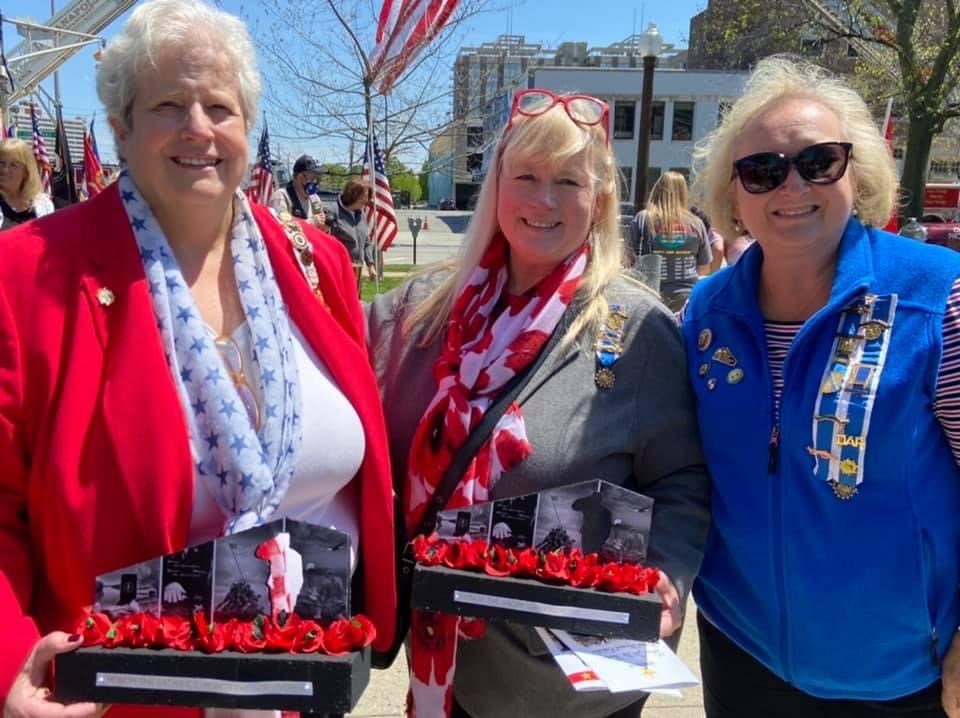
There are some unsung heroes across Indiana who support our veterans: the Daughters of the American Revolution (DAR). The first DAR chapter was established in Indiana in 1894, which is the Caroline Scott Harrison Chapter. There are now 83 chapters across the state and 5,000 Hoosier DAR members.
During the Spanish-American War in 1898, the DAR started supporting Veterans by knitting and sewing hats, mittens, and socks. DAR members continue this tradition today. During the pandemic, DAR members made over one million masks which were provided to veterans and front-line workers. More than thirty thousand of these were created in Indiana.
DAR supports our Hoosier Veterans in a number of ways. DAR Members care for veterans in the VA hospitals, at home, and in long-term care facilities. Additional efforts include supporting homeless veterans through the collection and dispersement of t-shirts, underwear, and socks, which is ongoing throughout the year. There are numerous annual Veteran events where the DAR partners with other VSOs in a variety of supportive capacities.
Our active duty military is supported by packages shipped overseas and the DAR has sent over two million dollars worth of coupons for commissaries to active duty bases around the world (the commissaries will accept these coupons even if expired).
Countless commemorative certificates, awards, and scholarships to individuals and students have been awarded by DAR chapters, honoring deserving individuals for their contribution to our communities. Support by DAR may resemble a thoughtful neighbor by mowing the lawn for a Veteran serving abroad, and many more gestures of kindness large and small — most of which happens without knowledge of who did this.
Through memorial services on Veteran’s Day, Memorial Day, and other remembrance occasions such as supporting POW | MIA organizations, the DAR daughters call the attention to those we have lost through selfless service to our country. The DAR is an official commemorative partner with the VA.
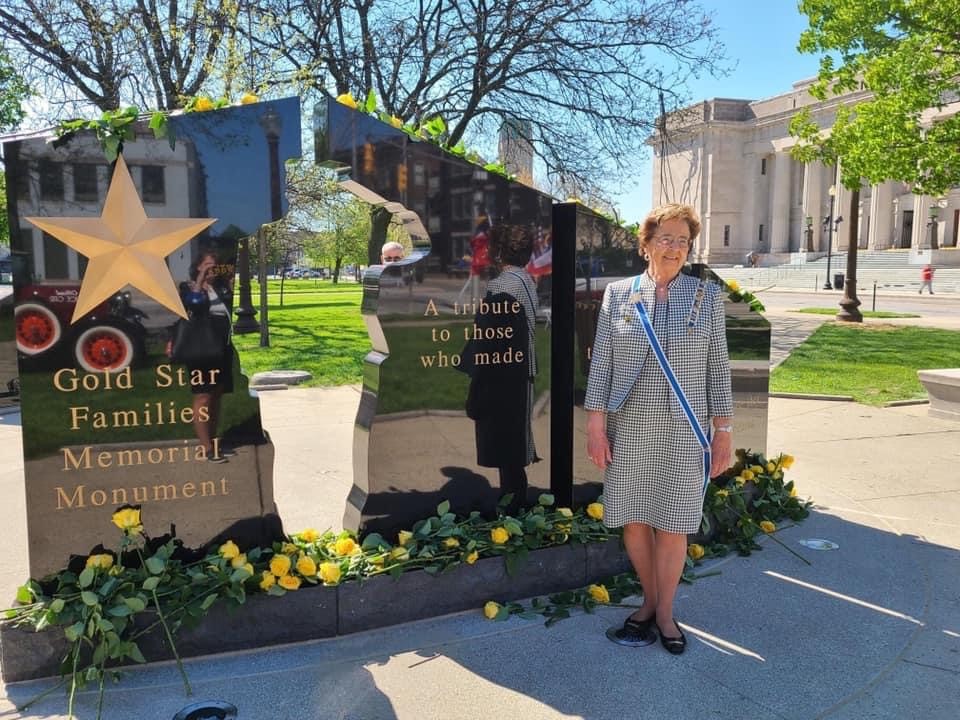
DAR also supports the Library of Congress by interviewing as many Hoosier Veterans as possible, providing audio and video interviews to record our important military history.
Wreath-laying at old or new monuments is evidence of a DAR member being involved in a ceremony. And let’s not forget the food! Daughters of the Revolution provide tons of food each year for many Veteran events statewide. DAR is always there to add the hospitality angle, including wreaths, and are usually behind the scenes with the visual appearance of an event by providing food and logistical support, including set up and clean up. A recent example of DAR efforts includes this summer’s Gold Star Family Memorial dedication ceremony in May and the Korean War brick ceremony, both held on the grounds of the Indiana War Memorial.
In addition to organizing food and refreshments, DAR is probably best known for its “genies”, or genealogists. DAR genies found 116 of the missing Hoosier Veterans from the Korean War and recovered most of their photos, which were featured on placards at the dedication. Thousands of hours of their time was spent on this worthwhile effort. The importance of remembrance is that the service of these Veterans is important. It reflects that these veterans matter. DAR women are essentially the boots on the ground for many efforts to support Veterans.
Another extremely important project that DAR chapters across the state are engaging in is, “Welcome Home Hoosier Veterans”. The Indiana Vietnam Veterans Gift is hand-delivered and presented in-person at events, pick-up locations and to homebound Veterans. This year marks the 100th anniversary of the Tomb of the Unknown Soldier. The special services and events will happen across the country with DAR members involved. The purpose of these events is to remember and reflect.
Since the first U.S. DAR chapter was established in 1890 national formed, as a rule, DAR daughters don’t discuss politics and they don’t discuss religion. They are dedicated to the retention and preservation of American History and teaching military history is especially important. It’s the basis upon which our country was formed.
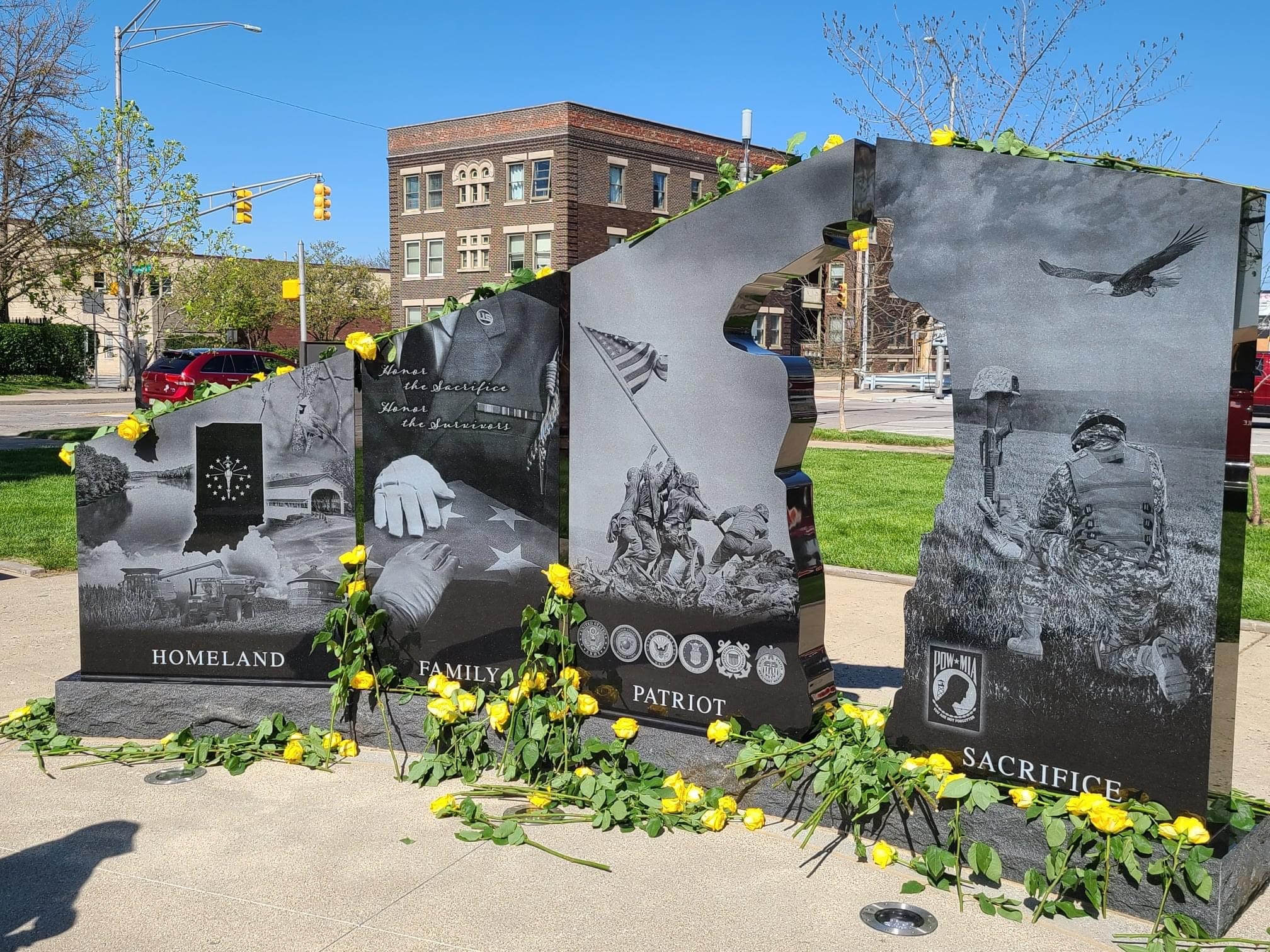
Brick dedication ceremony remembers Indiana Korean War fallen, missing
Thursday, July 29, 2021
by Kirsten Clark
INDIANAPOLIS – In total, 195 bricks generously donated by several donors in honor of Indiana’s Korean War fallen and missing servicemembers were placed in the street during a ceremony July 24 on Monument Circle at the Indiana Soldiers and Sailors Monument.
More than 350 people attended the dedication ceremony recognizing Indiana veterans of the Forgotten War that took place between 1950 and 1953.
“These bricks around Monument Circle will help give these families some closure and prevents their veteran stories from being forgotten,” said J. Stewart Goodwin, Indiana War Memorials executive director and retired U.S. Air Force brigadier general. “Their names are there – approximately one million people will walk past here this year. We aim to educate, honor and keep the Korean War in the front of people’s minds.
“We don’t want anyone to ever forget those that went before us, or those who come after us,” he added.
Until the end of World War II, Japan maintained control of Korea. But when their own country required a focus on rebuilding efforts, the island nation relinquished much of Korea, leaving it vulnerable. Prior to 1950, the Soviet Union and China were already attempting to advance communism throughout Asia, thus the U.S. and U.N. efforts in the region during this time began as an attempt primarily to prevent the spread of communism.
“When Korea began, there wasn’t a proper plan in place to address this conflict,” Goodwin said. “It had been just five years since World War II ended and there was not much change in technology and weaponry, and they were somewhat forced to use similar tactics.”
After World War I and World War II, the U.S. was not in the best position to fight yet another war, far from home.
“This was a different part of the world – different topography, different time, different war, and very different attitudes towards war.
“The super stars from WWII were mostly gone. They were using the same equipment in a different environment. Russia is providing people and tactics; China had its strengths,” said Goodwin. “The American people generally had no interest in Korea and really no fear of communism yet. In 1950, there was no definitive act of war such as the attack on Pearl Harbor to rally the American people.”
The U.S. Congress never declared actual war during those years. The conflict at the time was called a ‘police action’ and Congress became less sensitive to those servicemembers who risked their lives in the conflict. Veterans of the Korean War were not treated to the fanfare and celebrations veterans of WWII were treated to, and the so-called police actions in Korea became known as “The Forgotten War”.
The Korean War’s Prisoners of War and Missing in Action (POW/MIA) left behind families who were also frequently forgotten.
“Not many people today think of Korea as significant to military history or to U.S. history for that matter,” Goodwin said. “Veterans and their families soured because of how they were treated while fighting in this conflict and how they were treated when they returned home. Why would they keep their equipment or talk about their experience or preserve it? They felt no one cared anyway.
“It is very important to recognize and affirm Korean War veterans – we want them to know their service mattered, and that they made a difference. We must continue to tell their story and make sure veterans of the Forgotten War are never forgotten,” he added.
Guests to Indianapolis can see the memorial bricks in the street located on Monument Circle, around the Soldiers and Sailors Monument. To learn more about the brick program, visit https://www.indianawarmemorials.org/.
Resolution honoring 125th anniversary of the Indiana Veterans Home passes U.S. Senate
Friday, July 16, 2021
by Ian Connor
INDIANAPOLIS – A resolution honoring and recognizing the 125th anniversary of the Indiana Veterans Home (IVH) has passed the Senate.
The House version was introduced by Rep. Jim Baird (IN-04), and the Senate version was introduced by Sen. Todd Young (R-Ind.) and Sen. Mike Braun (R-IN).
“Indiana’s veterans and their families deserve the best in long-term care and service,” said Director Dennis Wimer, Indiana Department of Veterans Affairs. “The IVH has provided that service for over a century with dedicated care to our military families. We couldn’t be prouder to recognize this milestone and honor their commitment with the passing of this resolution.”
House co-sponsors include Rep. Jackie Walorski (R-IN-2), Rep. Jim Banks (R-IN-3), Rep. Victoria Spartz (R-IN-5), Rep. Greg Pence (R-IN-6), Rep. Andre Carson (D-IN-7), Rep. Trey Hollingsworth (R-IN-9), Rep. Larry Bucshon (R-IN-8), and Rep. Frank Mrvan (D-IN-1).
Located in West Lafayette, Indiana, the IVH offers long-term skilled nursing care, short-term rehabilitation, independent living, and memory care services to honorably discharged Indiana veterans, their spouses, and Gold Star parents.
With a comprehensive array of on-site services offered in a newly renovated home-like setting along with veteran-specific programming and events, IVH is the best choice for Indiana’s service members and their families since 1896.
Click here to view the available House bill version and click here to view the Senate bill version.
